
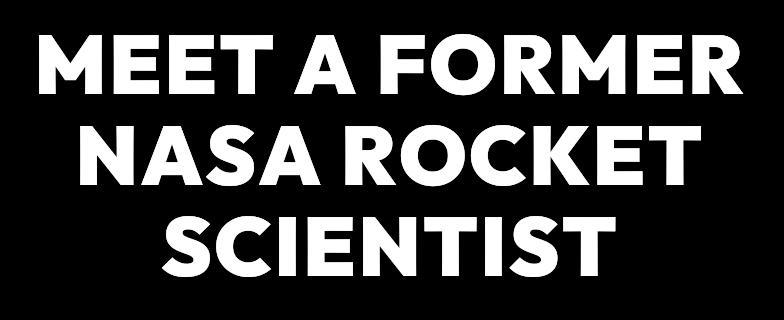
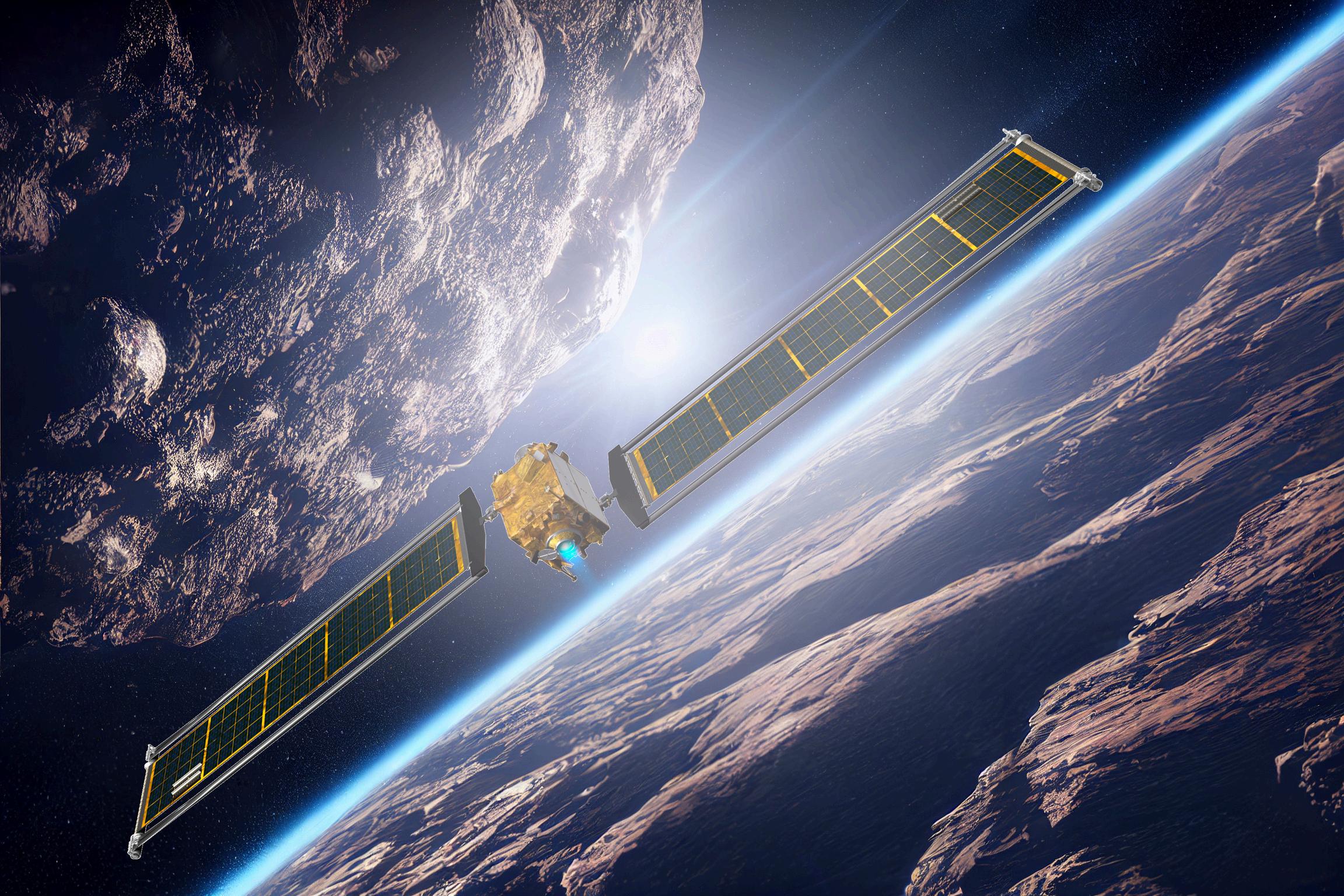

STEMCREW MAGAZINE STEM Trailblazers 114 4 FUN AND ENGAGING STEM ACTIVITIES FOR KIDS HowtoKeepGirlsin STEMThrough InclusiveEducation Kevin J. DeBruin 4 +


Photo
Photo Credits: Courtesy of Kevin J DeBruin
Contributor Writers
Michelle Dusko Biferie
Karen Romano Young
Dani Schroeder
Julianna Sheeran
Writer
Tiffani Teachey
Editor

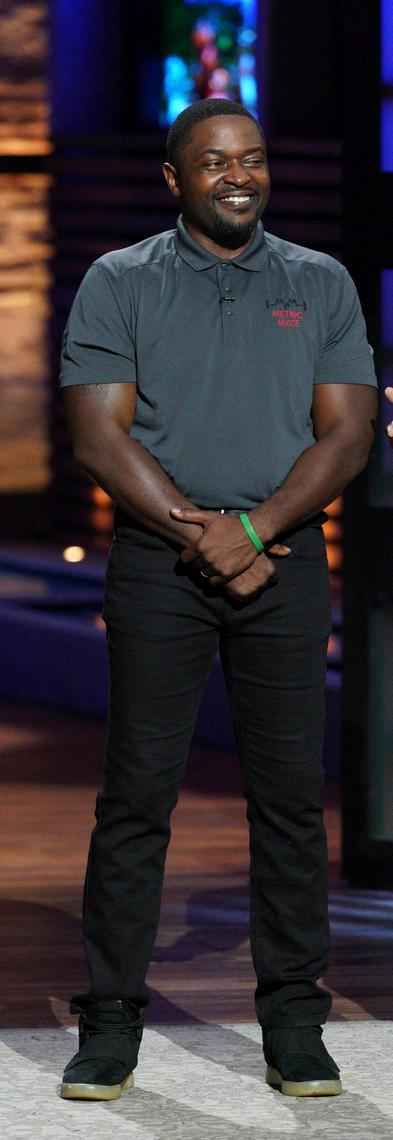
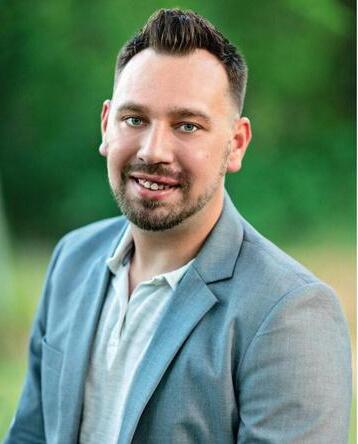
Tiffani Teachey
Creative Directors
Tiffani Teachey
Crystal Jordan
Jazmine Hawkins
Cover Features
Kevin J DeBruin
Graphic Designer
Crystal
C R E D I T S Spring 2024 STEM Crew Magazine Issue 09 45
69 29 47 Meet the Founder Note Tiffani’s Editor Note Interview with Kevin J DeBruin 02 03 09 S T A P L E S
1 |STEMCREWMAGAZINE
Jordan

TiffaniTeachey
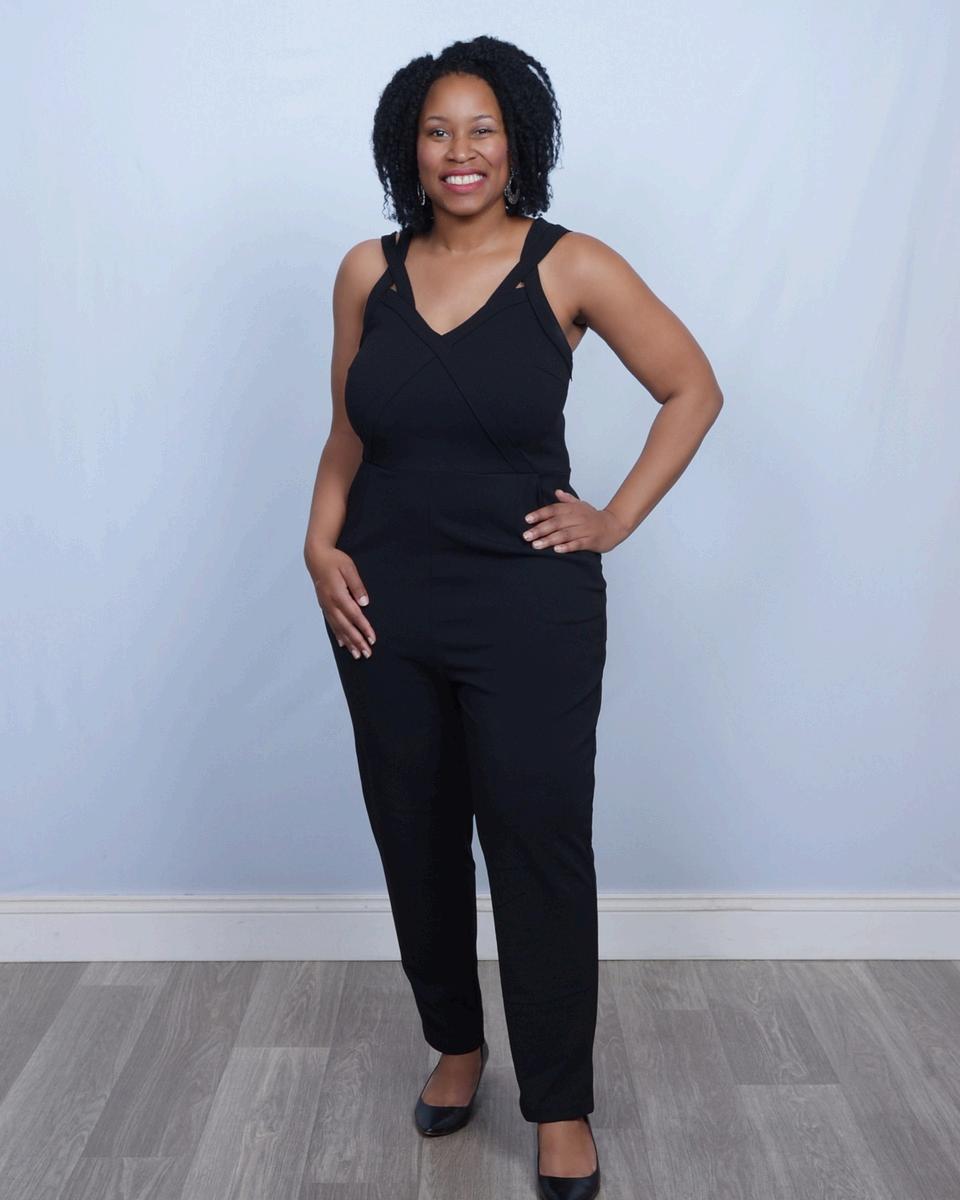
Hereisalittleaboutourfounder,TiffaniTeachey.
Amagazinefeaturingscience,technology,engineering, and math (STEM) trailblazers who are unveiling the brillianceofSTEMMindsthroughinspiring,creating,and transforming our kids has been a goal of Tiffani. As a result,theSTEMCrewMagazinewascreated..
This is a magazine written by STEM advocates and educators.ThegoalofSTEMCrewMagazineistostrive toempowertheSTEMleadersoftomorrowandbridge thegapbetweenexpertiseandinspiration
At STEM Crew Magazine, we believe that the fascinatingrealmsofScience,Technology,Engineering, and Mathematics come alive through captivating stories and through the voices of remarkable individualsshapingthesefields
MEETSTEMCREW MEETSTEMCREW MAGAZINE MAGAZINE FFOUNDER
OUNDER
MESSAGEFROMTIFFANITEACHEY
Doyouwanttobefeaturedinourmagazine? Emailusatinfo@stemcrewmagazine.com S P R I N G 2 0 2 4 E D I T I O N 2|STEMCREWMAGAZINE
Tiffani’s Editor Note
This issue will nurture minds and empower innovators through STEM
As the spring blossoms unfurl their vibrant petals, we at STEM Crew Magazine are thrilled to present our Spring 2024 issue, a celebration of curiosity, innovation, and the boundless potential of the human mind. In this edition, we have the honor of featuring Kevin J. DeBruin, a former NASA rocket scientist, host, author, speaker, and educator, whose remarkable journey serves as an inspiration to us all.
Kevin's story is a testament to the power of passion and perseverance, reminding us that the path to greatness is paved with determination and a willingness to embrace challenges. Through his work with SPACE CLASS, he has ignited the spark of wonder in countless young minds, fostering a love for STEM that transcends boundaries
Complementing Kevin's inspiring narrative, we are delighted to present a diverse array of articles that showcase the brilliance and creativity of our contributing writers. From Julianna Sheeran's engaging STEM activities for kids to thought-provoking pieces on fostering innovation and empowering girls in STEM education by Michelle Dusko Biferie, this issue promises to captivate and enlighten.
Dani's "Declassified Guide: Award Application Success and Resources" offers invaluable insights for those seeking to navigate the world of STEM accolades, while Karen Romano Young's "I Was A Kid" project reminds us that even the most accomplished individuals once faced the same uncertainties and obstacles that many of us encounter on our journeys.
Additionally, we are honored to highlight 15 remarkable STEM Trailblazers who have shattered glass ceilings and paved the way for future generations in their respective fields, serving as beacons of inspiration for all. As we turn the pages of this issue, we invite you to embrace the spirit of exploration and discovery that defines our collective pursuit of knowledge
Together, we will nurture minds and empower innovators, fostering a generation of trailblazers who will shape the world of tomorrow. Thank you for joining us on this remarkable voyage, and let us continue to push the boundaries of what is possible, one story at a time.
Tiffani Teachey Founder
Tiffani Teachey Meet thefounder
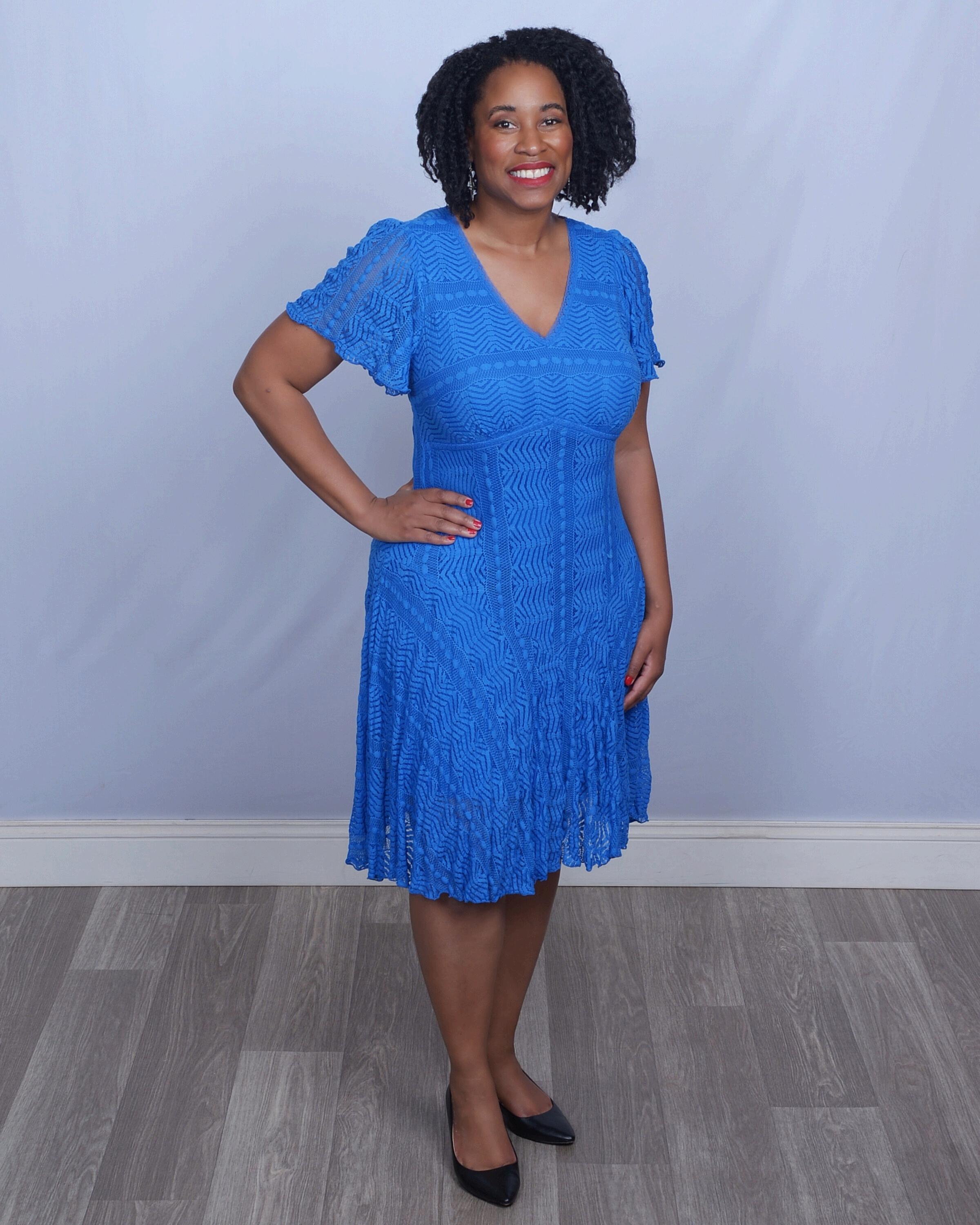

3|STEMCREWMAGAZINE
CONTRIBUTING WRITERS Meet Our
This issue will shapes the next generation of STEM leaders

JuliannaSheeran STEM Teacher
Julianna Sheeran, a third-generation teacher with eight years of experience, holds a Bachelors of Science in Interdisciplinary Studies with an emphasis in 4th-8th grade Math and Science, as well as a Masters in Curriculum and Instruction with an emphasis in STEM from Tarleton State University Specializing in STEM education in Terrell, TX, she fulfills her dream job, passionately integrating hands-on learning and problembased teaching while enjoying hobbies like crocheting, reading, and traveling
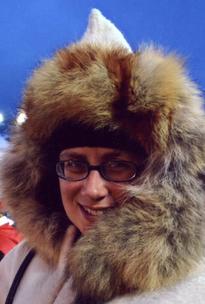 KarenRomanoYoung Creator/Director
KarenRomanoYoung Creator/Director
Karen Romano Young is an award-winning children's book author, a science communicator, and the creator/director of I Was A Kid, her third comic-centered series Her work has taken her to the Arctic ice, the Antarctic continent, the deep sea, and many other amazing locations She lives in Connecticut with her family, a big dog, and a small striped cat
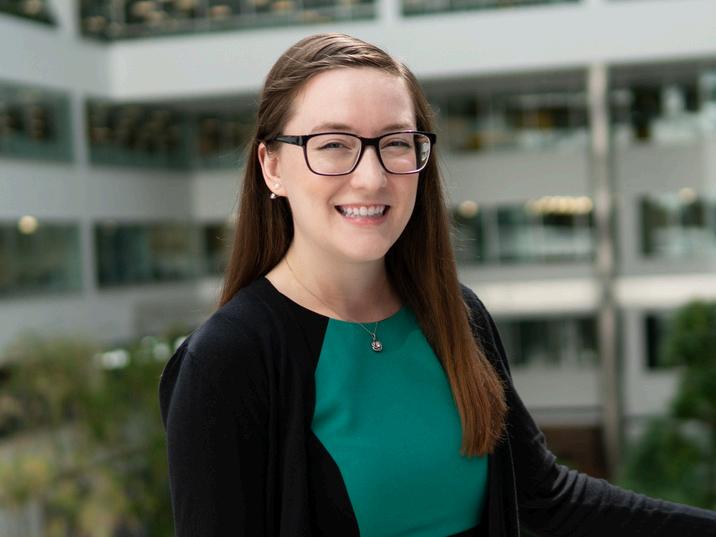
DaniSchroeder Civil Engineer
Danielle Schroeder, PE, ENV SP is a Philadelphia-based Civil Engineer specializing in transportation, recognized for her contributions by ASCE as one of their New Faces of Civil Engineering in 2021 She's dedicated to infrastructure rehabilitation and inspiring future STEM professionals through extensive outreach efforts, while enjoying travel and outdoor activities with her partner and rescue dog in her spare time
MichelleDuskoBiferie
Doctoral Student & Research Manager
Michelle Dusko Biferie is a doctoral student at the University of British Columbia, Canada Her research interests include STEM education, digital learning and resiliency

4|STEMCREWMAGAZINE
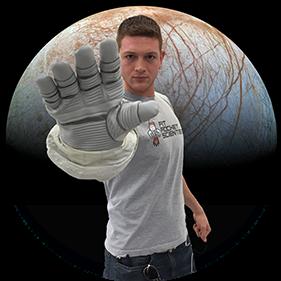
KEVIN J. DEBRUIN

INFO@STEMCREWMAGAZINE.COM WWW.STEMCREWMAGAZINE.COM @STEMCREWMAG @STEMCREWMAG @STEMCREWMAG CONTENTS
09 58 EXCLUSIVE! IGNITECURIOSITY+SPARKINNOVATION+SHAPETOMORROW 28 14 AMAZING STEM TRAILBLAZERS FEATURES MEET THE FOUNDER HOW DID THEY GET FROM THERE TO HERE? 07 INSPIRING CREATIVITY IN STEM EDUCATION: FOSTERING INNOVATION 19 02 Find out what inspired her to launch the magazine and her vision for its future Join us on a journey of exploration and discovery as we unlock the creative potential of STEM learners. I Was A Kid is here to show you just what some amazing STEAM professionals and students were like as kids, and to demonstrate the paths they took to get where they are today. HOW TO KEEP GIRLS IN STEM THROUGH INCLUSIVE EDUCATION 21 It's time to change how we approach STEM education by giving girls an equal footing with inclusive STEM education DANI’S DECLASSIFIED GUIDE: AWARD APPLICATION SUCCESS AND RESOURCES 25 Six tips from Dani’s personal experience on individual award applications that can hopefully help you! 4 FUN AND ENGAGING STEM ACTIVITIES FOR KIDS Science - Blubber Glove Technology - Unplugged Coding Engineering - Windmill 58 59 60 61 Math - Patterns 62 5|STEMCREWMAGAZINE
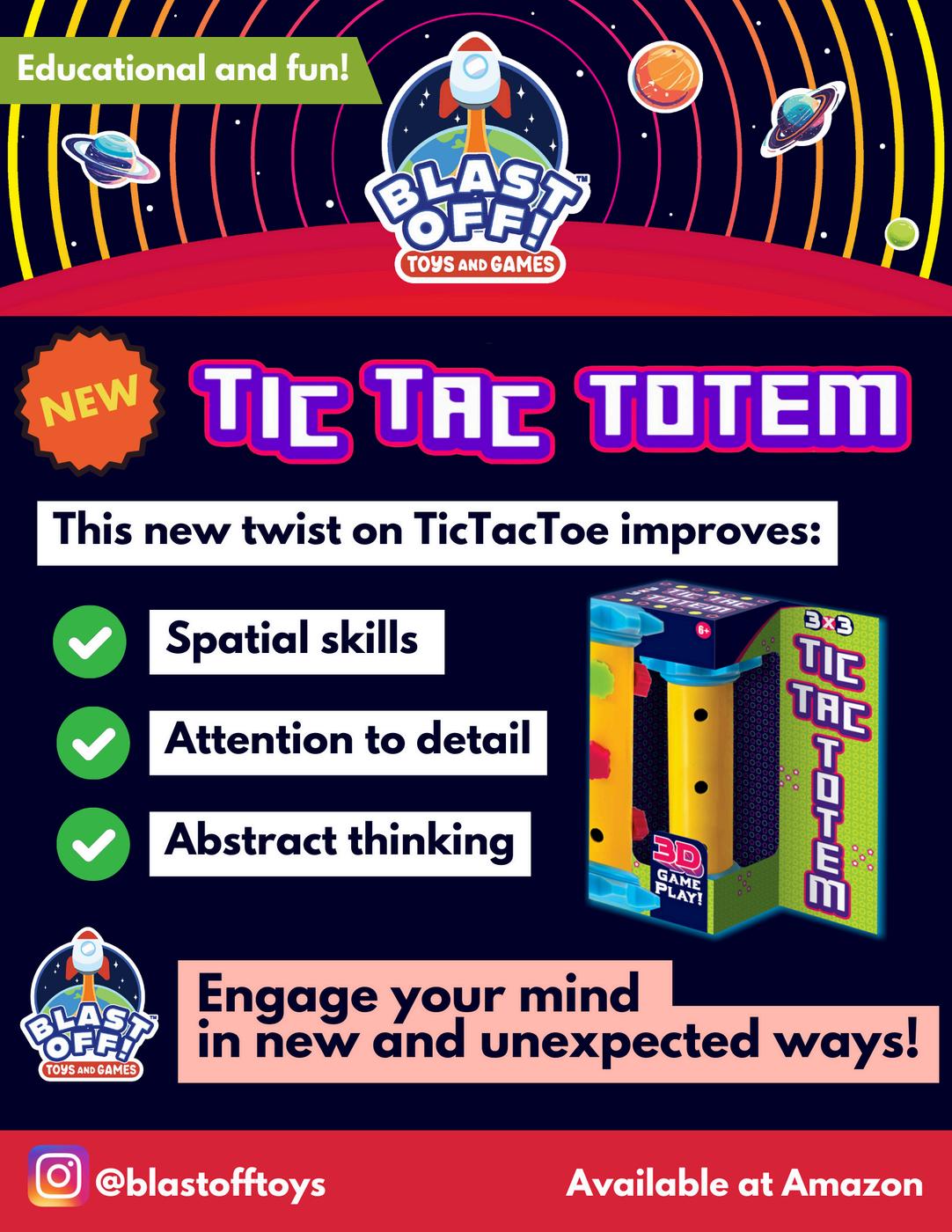
Inspiring Creativity in STEM Education: Fostering Innovation
By Tiffani Teachey
Welcome to the world of STEM education, where creativity, curiosity, and innovation converge to shape the minds of future scientists, technologists, engineers, and mathematicians! In this blog post, we'll explore the importance of inspiring creativity in STEM education and discuss strategies for fostering innovation in the classroom and beyond. Join us on a journey of exploration and discovery as we unlock the creative potential of STEM learners
The Power of Creative Thinking in STEM STEM education goes beyond rote memorization and standardized tests; it's about nurturing creative thinking and problem-solving skills that are essential for success in the 21st-century workforce By encouraging students to think critically, ask questions, and explore new ideas, educators can inspire a lifelong love of learning and innovation. Creativity is the driving force behind scientific breakthroughs, technological advancements, and engineering marvels that shape our world.

Lesson Learned: By incorporating creative thinking exercises and openended projects into STEM curricula, educators empower students to approach challenges with imagination and ingenuity. They learn to view failure as an opportunity for growth, experiment with new ideas, and collaborate with peers to find innovative solutions to real-world problems.
Hands-On Exploration: The Heart of Creative STEM Learning
Hands-on exploration lies at the heart of creative STEM learning, offering students opportunities to engage with concepts in a tangible and meaningful way. Whether it's conducting experiments in the laboratory, building robots in the makerspace, or designing prototypes in the engineering lab,
7|STEMCREWMAGAZINE
hands-on activities provide a platform for students to apply theoretical knowledge to real-world scenarios. Through trial and error, they learn to iterate, innovate, and persevere in the face of challenges.
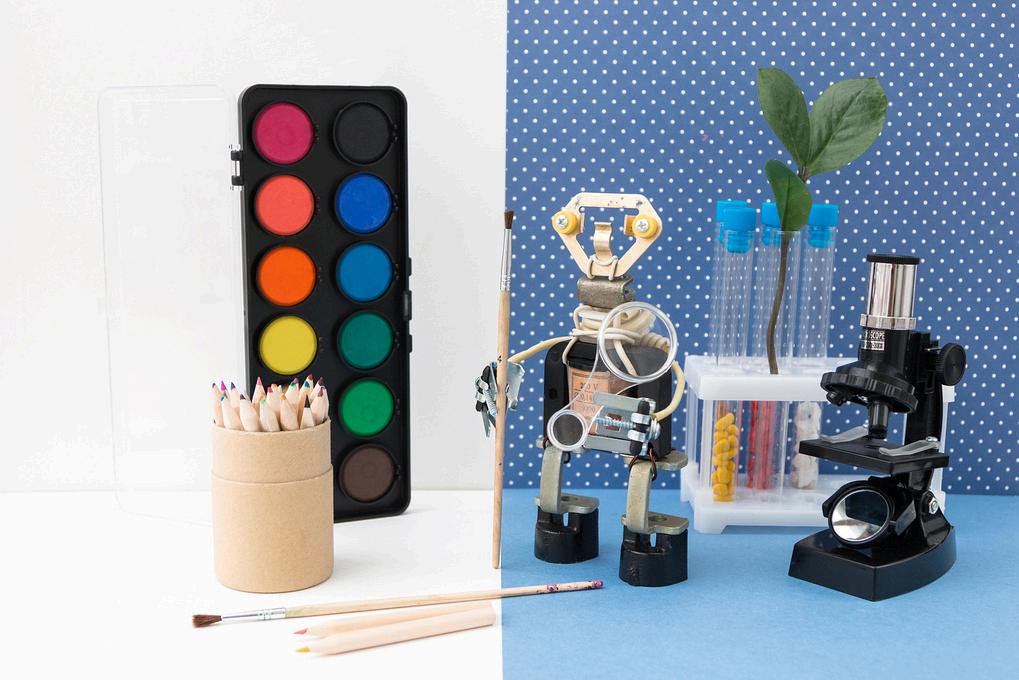
Lesson Learned: Hands-on exploration not only reinforces conceptual understanding but also cultivates essential skills such as collaboration, communication, and critical thinking. Students develop a sense of ownership over their learning as they take on active roles as scientists, engineers, and mathematicians, fostering a deeper connection to STEM disciplines and sparking a passion for exploration
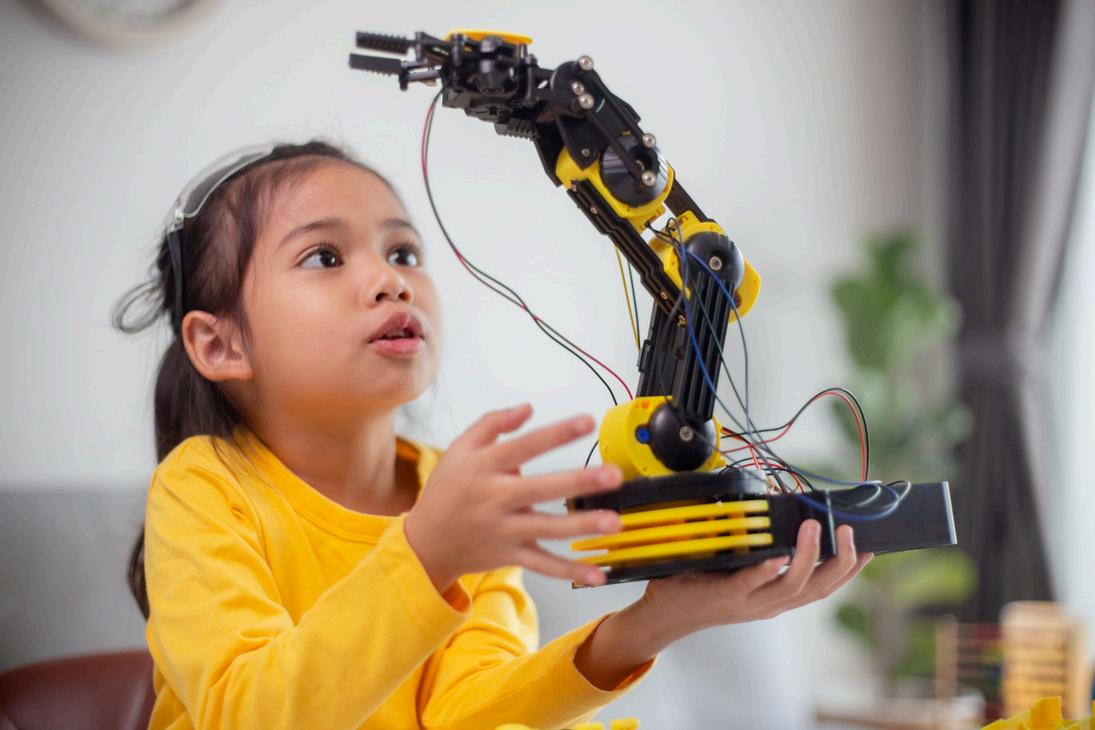
Integrating Arts into STEM: The Power of STEAM Education
Integrating arts into STEM education transforms STEM into STEAM, infusing creativity and artistic expression into the learning process. By incorporating visual arts, music, drama, and design thinking into STEM curricula, educators can inspire interdisciplinary connections and foster holistic learning experiences. STEAM education encourages students to think
creatively, communicate effectively, and approach problems from multiple perspectives, preparing them for success in a rapidly evolving world.
Lesson Learned: Through STEAM education, students discover the interconnectedness of STEM and the arts, exploring the intersections between science, technology, engineering, mathematics, and creative expression. They learn to embrace ambiguity, embrace failure, and celebrate diversity of thought, nurturing a spirit of innovation that fuels their future endeavors.
Join the Creative STEM Education Community! Join Kids’ STEM Success: Excel In Math & Science, Scholarships, & Accelerate FB Group: https://www.facebook.com/groups/stemistheway/
8|STEMCREWMAGAZINE

Who is Kevin J. DeBruin?
A ROCKET SCIENTIST TURNED SPACE EDUCATOR
AND ENTREPRENEUR
Kevin J DeBruin is a former NASA rocket scientist who transitioned into entrepreneurship, founding his space education company, Space Class He is now dedicated to making science and space exploration accessible through engaging programs, resources, and outreach initiatives to inspire people of all ages.
Early Career and NASA Experience
As a systems engineer at NASA's Jet Propulsion Laboratory, Kevin worked on integrating complex spacecraft systems for ambitious missions like the Europa Lander concept, which aims to land a robotic spacecraft on Jupiter's icy moon Europa to search for signs of life His expertise in Model-Based Systems Engineering (MBSE) allowed him to understand how different components interconnect and function cohesively, ensuring the successful integration of various subsystems. During his time at NASA, Kevin was involved in developing cutting-edge technologies for space exploration, such as advanced propulsion systems and autonomous navigation capabilities His book "To NASA and Beyond" chronicles his journey in systems engineering and provides insights into the challenges and triumphs of working on groundbreaking space missions
Transition to Entrepreneurship
After over a decade at NASA, Kevin decided to transition to start his ventures, driven by a desire for independence and control over his projects This transition enabled him to establish a space education and consulting company, exploring innovative ways to engage diverse audiences with science and space exploration topics As an entrepreneur, Kevin has the freedom to pursue his passions and create educational programs tailored to the needs of different age groups and audiences. He has developed a range of interactive resources, including virtual reality experiences and hands-on activities, to make learning about space more immersive and engaging
Simplifying Science Communication
Kevin has garnered praise for his ability to break down complex scientific concepts into engaging, easy-tounderstand analogies and explanations.
He is often compared to a mix of Bill Nye the Science Guy and Tony Robbins This talent for making science fun and relatable has allowed him to effectively communicate with audiences ranging from young students to professionals worldwide Through his educational programs and public speaking engagements, Kevin has a knack for capturing the imagination of his audience, using storytelling techniques and real-world examples to illustrate abstract scientific principles He believes that by making science more accessible and relatable, individuals of all ages can develop a deeper appreciation and understanding of the universe's wonders
Balancing Work and Personal Life
To maintain a healthy work-life balance, Kevin emphasizes the importance of self-awareness, effective time management, and self-discipline across his various roles He incorporates fitness routines into his daily schedule, recognizing the benefits of physical activity for enhancing mental clarity and productivity Kevin's commitment to fitness extends beyond personal well-being; he believes physical challenges foster resilience and a growth mindset, essential for success in any field. By prioritizing self-care and setting boundaries, Kevin can juggle his entrepreneurial endeavors, educational initiatives, and personal pursuits with greater focus and energy
Unique Background and Experiences
In addition to his impressive career in STEM fields, Kevin has pursued unique experiences that set him apart He competed on the physically demanding obstacle course competition show American Ninja Warrior during its 9th season, showcasing his dedication to fitness and pushing personal boundaries. This experience tested his physical abilities, mental toughness, and perseverance, which have served him well professionally
Future of Space and STEM Education
Looking to the future, Kevin is particularly excited about potential discoveries in universal biology exploration, which studies the fundamental principles of life across the universe. Kevin is also passionate about encouraging children's curiosity in STEM fields from an early age, recognizing that fostering a love for science and exploration is crucial for driving advancements in space exploration and scientific understanding
10 |STEMCREWMAGAZINE
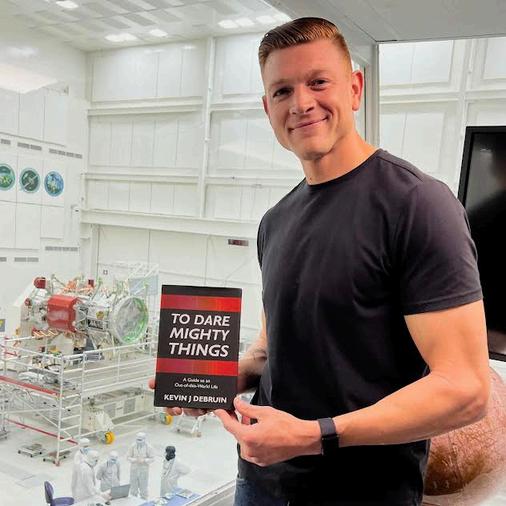
Kevin J. DeBruin is empowering the next generations through passion and perseverance.
Q: How did you get started with what you are doing today?
A We got to go back to when I was ten years old I saw the movie October Sky It came out in 1999, and it's about a young boy in Colwood, West Virginia, who sees Sputnik, their first man-made satellite, go across the night sky, gets inspired, and eventually builds rockets, wins a science fair, goes on and becomes a NASA engineer, training astronauts It's based on a true story I saw this movie and was like, wow, I want to design spaceships for NASA Going back then, even a little before that, in preschool, I said I wanted to be an astronaut when I grew up. I haven't quite made it there yet, but, you know, I'm on track And then it took me a long time to make that happen
However, I graduated from Georgia Tech with a master's in aerospace engineering. I got a job at NASA's Jet Propulsion Laboratory as a systems than doing my actual engineering job
INTERVIEW WITH Kevin J. DeBruin
engineer, where I was working on some of the most advanced missions that NASA has For example, the Europa Clipper, which is launching, coming up in a few months, October of this year, 2024 Europa is one of the moons of Jupiter, so it's the best place to house alien life in our solar system So we ' re going to go check it out That's the first half of the journey While at NASA, I fell in love with educating about space and enjoyed that more than doing my actual engineering job.
A few years into working at NASA as a rocket scientist, I left and started my own space education and consulting company. I've been doing this for the last five years now, spreading space and science in any way I can
Q: Who do you help in your business now and how so?
A. I get asked that question a lot. Who do I direct or, like, who's my audience and it depends on, like, what platform I'm using. Am I in person? I kind of COVID everything I teach space camps across the country and the world I teach a space camp in South Korea every year, and that's mostly like elementary school students So we ' re looking at grades three through about 8th grade Korea's elementary school schedule is a little bit different, but three through 8th grade is where I do most of, I would say, my educating work with videos and hosting programs and in-person activities. But I've been speaking at international symposiums. I've gone off to high schoolers. It's all over the place. And I love each group differently
I love the little kids because I can be the biggest goofball, which I naturally am, and draw a lot of excitement with them from top-level statements and a lot of energy in my performance Where then we ' re moving to, like, middle schoolers and high schoolers I can get further into the details, but now I can start making some pop-cultural references to get them hooked. So, if we ' re talking about time travel, maybe I'm mentioning the DC comic The Flash, where if he runs fast enough, he can travel in time Is there any truth to that? Where does that come from?
11 |STEMCREWMAGAZINE
INTERVIEW WITH Kevin J. DeBruin
Then moving on into, like, international symposiums or adults or other professionals, then I can get down into the weeds and be like, okay, like, we can literally talk about, like, the nuts and bolts. I can get my real nerd on and we can really nerd out with some of those people. It's all areas of the spectrum, you know, I've even done preschoolers to retirees anywhere that I can find an avenue to educate or inspire about space, that's I'm going to take that opportunity
Q: On your website, it states “Kevin has had the privilege of speaking to more than 1 million individuals around the globe, from kindergarten to retirees.“ That's amazing. Can you please elaborate?
A. One of the big aspects that helped out with that is I became the host of a YouTube channel that had 13 million subscribers So were able to do like, backyard science experiments. And in every video I gave a space fact. I'm like, it might have nothing to do with space whatsoever. We were talking about breaking pinatas with pool noodles, but I was like, the foam for a pool noodle was one of the foams looked at for space shuttle tiles and insulation? No, we didn't use that. We used a derivative of that. But I'm, like, trying to put space in every little niche and cranny that I can love it
Q, Can you share your journey as a former NASA rocket scientist and your role in that experience?
A. I wanted to work for NASA, then it took me three years and over 150 applications to get my first NASA internship at NASA Langley Research Center While there, I realized I needed to go to graduate school I've written a whole book on my journey into NASA It's my memoir It's called to NASA and beyond I will summarize that 250 pages in 30 seconds. I saw the October Sky when I was ten years old and knew it. I chose Georgia tech as my graduate school because it was the only school in the country that has a lab in terms of systems engineering that I wanted to do, basically covering the whole big picture of a space mission But they rejected my application to grad school
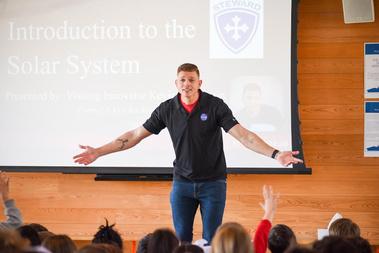
I had a mentor at NASA, JPL, that brought me in for a ten-week internship to prove to them that I belong Over those ten weeks, I set up for about 30 interviews by knocking on doors, saying, hi, I'm Kevin, I want a job And on the last day of my internship, I got hired to be a full time NASA rocket scientist. The official title is a systems engineer. For what I was doing and what I did. At NASA, there was an integrated spacecraft. So they're very complex 3d puzzles. That's not only mechanical, like physical puzzles, but the software, the data, the power lines going back and forth, as well as cost constraints and different requirements like mass and power data, all of these different things
My job is basically like a jack of all trades, needing to know how a spacecraft's different parts interconnect If we change one thing here, how does it ripple through the system? Oh, we want to add another card to the computer Okay, that's only like 300 grams, but down the line, that's now another, you know, 50 fuel just for that one little change So that was my job, and I did that on Europa Clipper, Europa lander, which unfortunately isn't going forward, and more than 30 other missions exploring our universe It makes me happy to talk about what I've done. Like, I love it. I did quit my dream job because I had a new dream. There are things I definitely miss, and you can see me light up.
12|STEMCREWMAGAZINE
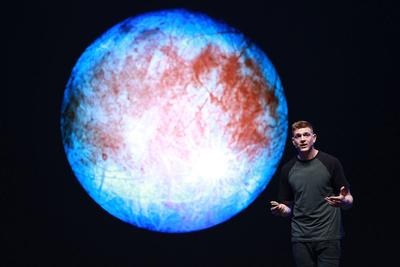
Q: What made you decide to transition from a NASA rocket scientist to entrepreneurship a former NASA rocket scientist to entrepreneurship??
A There were two defining moments, I would say, when I realized that NASA wasn't for me or that I needed something else One of them was that I was reading a book called The School of Greatness by Lewis Howes, which he cites, I think it's entrepreneur.com, which had a list. These are the twelve qualities of the richest people in the world And I'm like, reading through, and I'm like, I do that. I do that, I do that I'm like, I do all of these I have all these qualities but cannot make more money at NASA The way the government works, there's timebased promotion. You can have a better title or more work, but I won't make that much money as a government employee.
I'm not working at SpaceX or Blue Origin, which would double a NASA individual salary I was like, huh? Something's not right. I do feel like I'm meant for more I fell in love with education and then I was at my boss's retirement party, and he's like 65 years old, so happy He takes off his cap and gives a little speech. You know, at 65, I can finally say I'm free. I can do what I want and get what I want You know, I can vacation whenever I want. I'm like, at 65, I'm 25 at this point Like, that's 40 more years You can't go outside without a hat because your doctor says it's bad for your scalp I can't wait 40 years to be free, right? I'm like, okay, something needs to change
With my experience of falling in love with education, I was like; maybe there's some way I can do this all the time and pay my bills because I was doing it all for free. For the first three to four years, I was representing NASA I can't accept payment People are trying to pay me to say no.
If I can figure out how to transition into this, I can be my boss. I have control of my decisions every day. I can be free and live the life I want now. And I can do something that makes me feel truly alive inside Also, at NASA, if, let's say, something bad happened and I got injured or hit by a bus, someone would take up my duties the next day or week
They would replace me as an employee What I do now doesn't get done if I don't do it I'm creating new projects I'm going out there and doing the products and services I think this world needs, but they're not there So, I have to invent and create them And that makes me so proud I love doing that
Q: How do you explain complex science topics in a fun, easy-to-understand way?
A. It's taken a long time to figure that out, and it started by trying to figure out how I can showcase outer space on Instagram. I used to be a bodybuilder, and my Instagram was just me being a bodybuilder. And someone at NASA said, it looks like you ' re trying to be an aspiring fitness model in Los Angeles You're a rocket scientist at NASA Like, play to that How do I put outer space exploration into an image or a video? Reels weren't a thing at this time This was back in 2015 Periscope wasn't a thing yet, or even before that if you ' ve heard of Periscope or Twitter and are trying to figure it out So I started with, like, science Sundays It was much experimenting on, like, what works? What do people like? And then, I started to test theories
Like not just on the Internet; my brother and his wife are teachers so that I would talk to them. I'm like, okay, one ' s a kindergarten teacher and deals with children from first through fifth grade. And I'm like, are we still learning about the planets in third grade? If I see the periodic table, what grades don't understand that? Like, do I have to say carbon, hydrogen, or nitrogen? Will I get that? Or should I say all the little things we ' re made up of? I started to ask questions, and one of my favorite things was to teach my mother. My mom did not go to college And if I can get my mom to understand something, I've done it correctly
13|STEMCREWMAGAZINE
If I can explain, as I'm saying this, I'm like, I'm taking a really long time to say this. If I can explain what I'm trying to say in one to three sentences, then I know what I'm talking about But if it takes you a long time to explain it or you need diagrams or something else, it's like, if I can simplify it down, it needs to fit, you know, in, like, one to three sentences because people don't retain that much information So, what is the most important key point? And over the last about ten years, I've just been experimenting, refining, and learning what hits go back and forth, like what stand-up comedians do.
They'll first go into, like, these small clubs, run a joke a few different ways, see what hits, refine it, go to another club, try the joke another way Okay This one hit They just keep on building until they get to their, you know, Netflix special where now all the jokes hit perfectly because they've put in that groundwork to build it up
Q: As an author, Youtuber, and TV host, how do you deal with work-life integration or harmony?
A. There are times when I'm burning the candle at both ends I was redlining too hard about two weeks ago, and I practically died Friday and Saturday I didn't get off my couch for like 36 hours But it's a balance Right now, I would rather be working with eyes open to eyes closed than to work a nine-to-five for somebody else. I would rather deal with this stress right now all day long because I enjoy the stress more than the stress I was experiencing in the corporate world. I've discovered that life is basically like a teeter-totter where you go to the left extreme, and then if you ' re, oh, I'm too far in this extreme. Then you move back to the middle, and you got that nice balance, but then you go over to the right, and you ' re a little bit too extreme, and then you ' re like, oh, I notice it, and then you go back to the middle As time has progressed, I have realized to slow my frequency of going back and forth by also becoming aware of when I'm approaching one of those extremes sooner
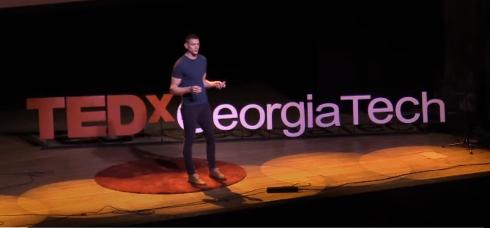
Instead of going to the end of the balance beam or the end of the teeter-totter, I go like three quarters of the way or halfway I'm like, oh, all right, now let's bring it back to the middle so it's not like sunshine and rainbows I figured out a balance The balance moves from one extreme to the other, and those extremes just become less extreme over time
Q: How do you make time for fitness alongside with science career?
A. Oh, I love that question because you asked it the wrong way and everybody does. It’s not how do I make time for fitness. It's fitness makes time for my other things. So in grad school, I was getting up at 04:00 a.m. I would go and work out and then go into the lab. When you have an active lifestyle, a consistent active lifestyle, and you ' re eating well, you have more energy, you actually
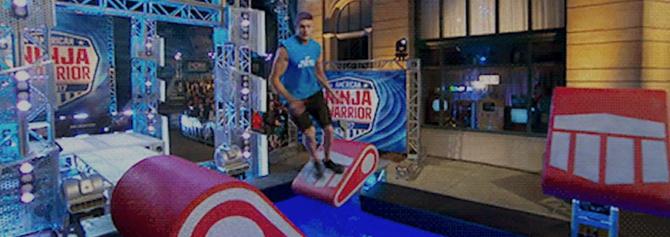
14|STEMCREWMAGAZINE
need less sleep to function. Your brain is clear, you have endorphins, you ' ve got this ability to have more energy and think clear Like, it's the fitness that has enabled me to do all of these things If I didn't have this fitness and active lifestyle, I wouldn't have the stamina, the endurance to continue to do all these things And I would have, I won't say more cloudy, but a less clear mindset and ability to think as I'm going through and doing all of this, that's good It's the prerequisite for doing what I do

Q: What future space discoveries most excite you and how can we make sure that our kids are going to go into STEM in that way?
A. The biggest thing I want to see happen is discovering or figuring out if biology is universal. So, we ' ve seen that physics, chemistry, and geology work throughout the universe, but we haven't yet seen biology anywhere other than Earth So when we ' re looking for life as we know it It would be amazing to find if there was past biology, past life on Mars, or active biology on the moon Europa, the moon Titan, or Enceladus Those two are around Saturn The more we can explore and see if we can find that biology, the more we'll know The big question is, are we alone in this universe? Or, like, is life prevalent everywhere? Is it not? Are we all alone? Or are we just, you know, one drop in a petri
dish of so many other life forms out there? So, being able to figure out that biology is only unique to Earth or.not.
Q: What is one thing people can start on right away if interested in being in your career?
A. I will say check out my company, SPACE CLASS, at www.virtualspaceclass.com, which has ten lessons about space exploration and science that aren't taught in schools. You're learning about the submarines we will send into the solar system Rockets You'll learn a big word called spectroscopy, which uses light to figure out what things are made of You'll learn how we communicate with stuff in space All the things I wish, like, I was taught in school because I was just taught, like, the planets I didn't even know there were more moons in our solar system until grad school when I became a NASA rocket scientist I heard Europa for the first time when I was 24 years old I thought that'd be the best place to look for aliens How was I not taught this earlier on? Check out SPACE CLASS, and you'll be able to get, like, that's the new way to start your space journey. The things you will be exposed to can leave you curious about where else you want to go and learn more.

CEOOFDEBRUINENTERPRISES,LLC
FORMERNASAROCKETSCIENTIST
@rocketdebruin
@kevinjdebruinNASA LearnMoreAboutOurCoverFeature
KEVINJDEBRUIN
@kevinjdebruin virtualspaceclass.com kevinjdebruin.com
@aplacecalledspace
15|STEMCREWMAGAZINE
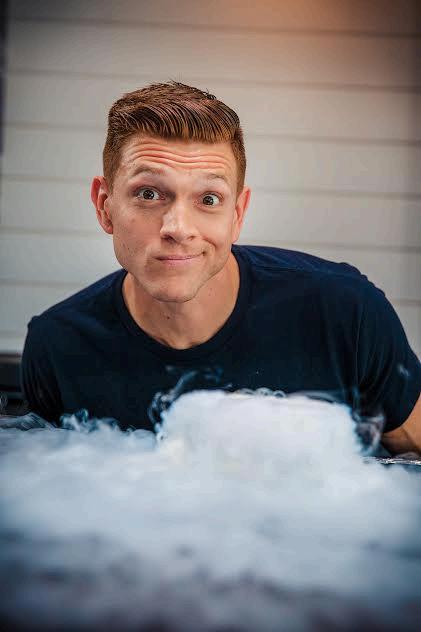

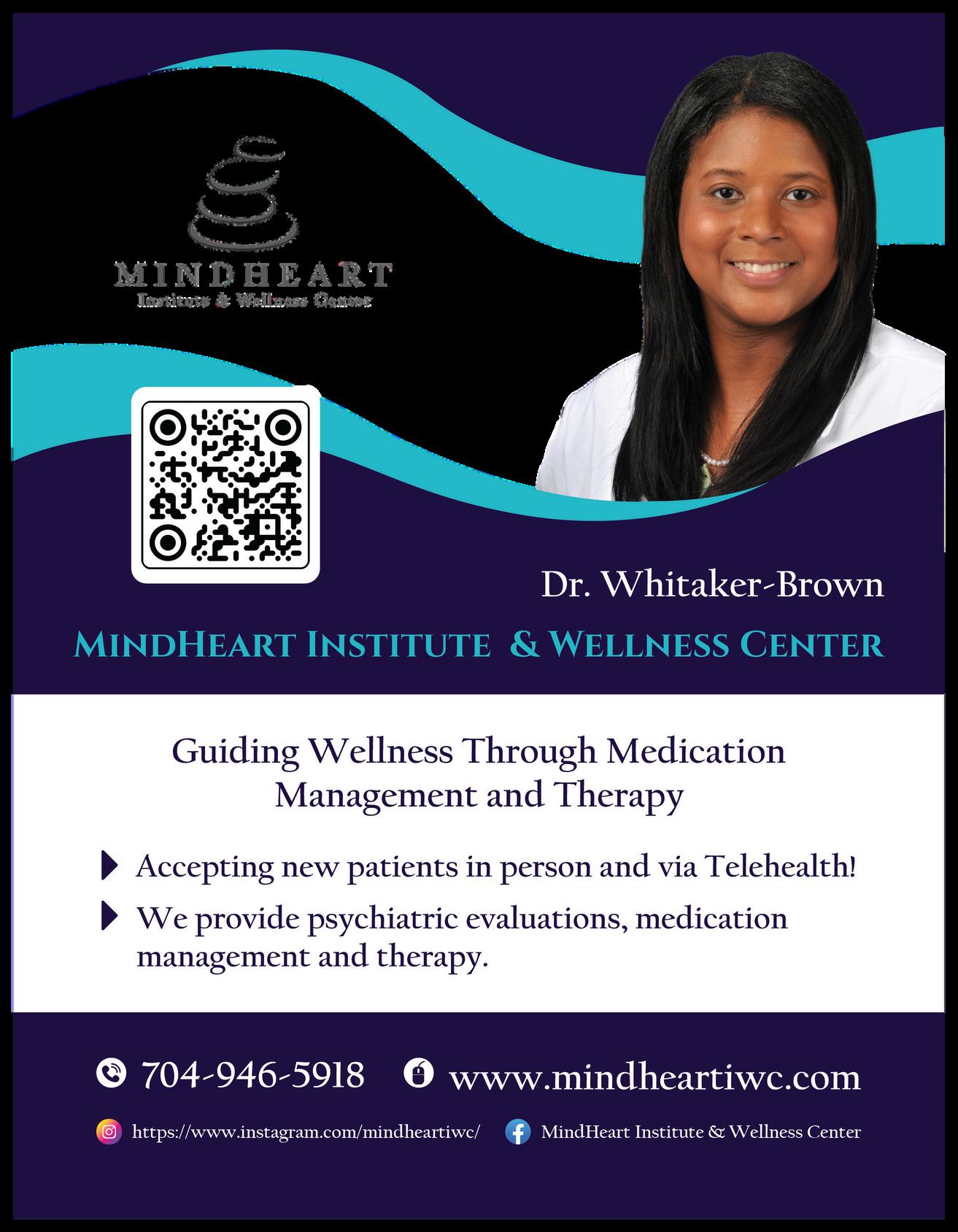
STEMCREWMAGAZINE
How Did They Get From There to Here?
by Karen Romano Young
So you hear about a scientist, someone with an amazing life, and think: that could never be me. I Was A Kid is here to show you just what some amazing STEAM professionals and students were like as kids, and to demonstrate the paths they took to get where they are bumps, twists, obstacles, and all. I Was A Kid (iwasakid.com) offers comics, photos, audio, video events, graphics, and text to open these pathways to all kinds of learners And they focus on people who represent groups not traditionally heard from Here are a few of the trading card sized comics that are available free as downloads on the website, where you can also find free large comics and all the rest of the I Was A Kid materials including ideas for teaching.
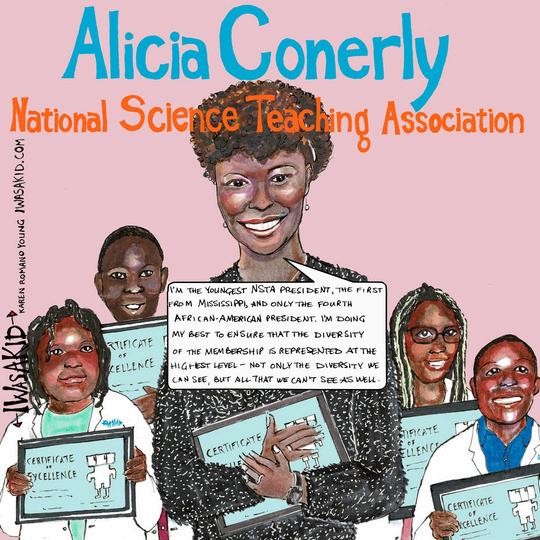

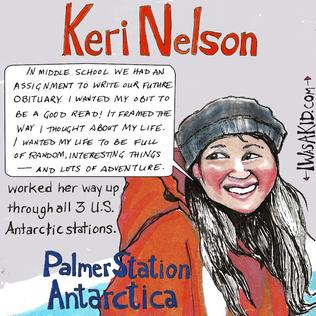
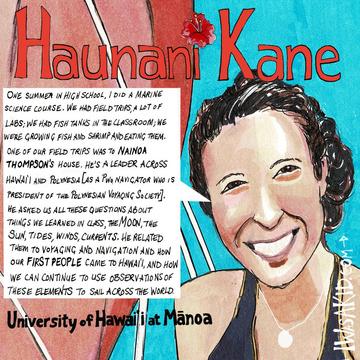

About the Author
Karen Romano Young is an award-winning children's book author, a science communicator, and the creator/director of I Was A Kid, her third comiccentered series. Her work has taken her to the Arctic ice, the Antarctic continent, the deep sea, and many other amazing locations. She lives in Connecticut with her family, a big dog, and a small striped cat
http://www.iwasakid.com
@doodlebugkry
Karen Romano Young

@iwasakidSTEAM and @karenromanoyoung
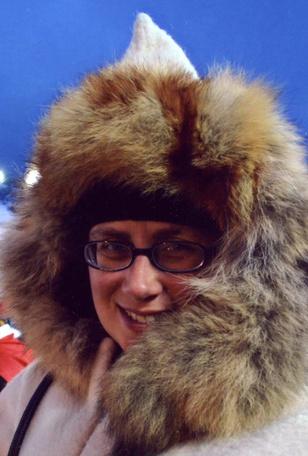
19|STEMCREWMAGAZINE

How to Keep Girls in STEM Through Inclusive Education
By Michelle Dusko Biferie
It's time to change how we approach STEM education by giving girls an equal footing with inclusive STEM education. North America has a STEM workforce shortage, and our technological, research, and development industries are losing ground to international competition. Our young women aren't getting the support they need to succeed in STEM despite popular girls-only STEM programming during their primary and secondary education. More problematically, the not-enough-girls-in-STEM problem is framed as a " women ' s issue"; however, it needs the full participation of both genders, schools, communities, and parents to encourage young women to choose and stay in STEM
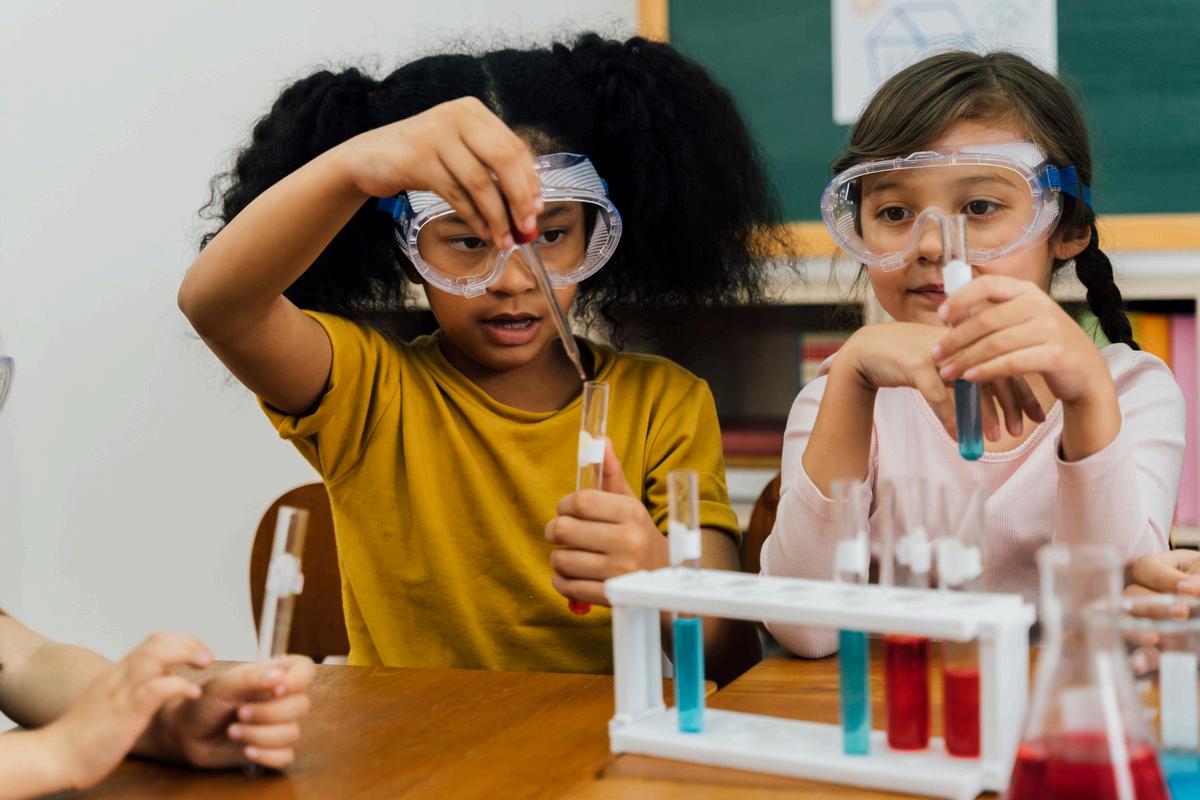
Gender differences in STEM academic and professional achievement largely depend on social, cultural and associated psychological factors The recent increase in girl-only STEM education programs addresses mostly individual psychological factors such as stereotypes, poor STEM identity, low confidence, lack of positive female role models and lack of a sense of belonging in STEM3. School and non-profit organization partnerships that enable sharing resources and teaching practices are the most effective4,6 Their efforts yield formidable results: young women report a stronger STEM identity, greater feeling of belonging in STEM, greater confidence in their abilities, more friendships and support with and
from other like-minded girls, and more knowledge about and interest in pursuing a STEM career5 Examples of girl approaches include female scientists discussing their career path, 'girlified' STEM activities such as lipstick and soap making to illustrate STEM principles, discussions about what it means to be a woman in STEM and facilitators and barriers to equal participation However, these programs ' temporary successes still don't translate into girls entering STEM education programs and careers
Despite the significant gains for girls participating in these programs, girl-only STEM programs are a band-aid solution, and with these solutions, they place the problem on girls themselves. These programs attempt to bolster girls' strengths while ignoring the rest of us that can promote equitable participation in STEM All-girl programs reinforce the misguided idea that girls need 'special educational approaches' and 'girl-centric' activities and separate space from the patriarchy to thrive as budding engineers and scientists These programs support girls in isolation from the world they actually live in, in essence, segregating them and telling them they are the ones that need to change
In the age of inclusivity in education, how can we get away with separating students based on gender from receiving an education? Girl Power has its limitations. Girls alone cannot change the disheartening statistics of Canada's STEM workforce composition As parents, educators, and school administrators of any and all genders, we also need to change Instead of just addressing the symptoms of the problem of girls' weaker STEM identities, we try to be courageous in avoiding quick, band-aid simple solutions (like girl-only programming) In other words, we need to be the change we want to see Below is a series of tips on how to help young women along in their STEM journeys based on the roles we share in their lives.
6 21|STEMCREWMAGAZINE
Parents
What the research says: Parents model gendered behaviors and can influence child development through expectations around gender roles and activities Even small children learn through parental modeling and unconscious biases Parental support was one of the most significant predictors of girls staying with their STEM dreams, especially in teenage years when girls' interest in STEM wonders due to gender cultural expectations3,5,6,7
What you can do:
Be mindful of unconscious bias and how it shows up in your choice of toys and expectations of boy and girl behaviour.
Be a STEM role model; change gender roles in your family.
Notice and encourage your child's interests despite pressure from family or friends.
Believe in your daughter and set high academic expectations for STEM3.
Teachers

What the research says: Inclusive STEM pedagogy focuses on universal and whole-child approaches that are effective for girls and marginalized and vulnerable students. More traditional approaches to classroom management can inadvertently create an uncomfortable learning environment for such students and reinforce gendered expectations of STEM academic performance and stereotypes 3,6,7
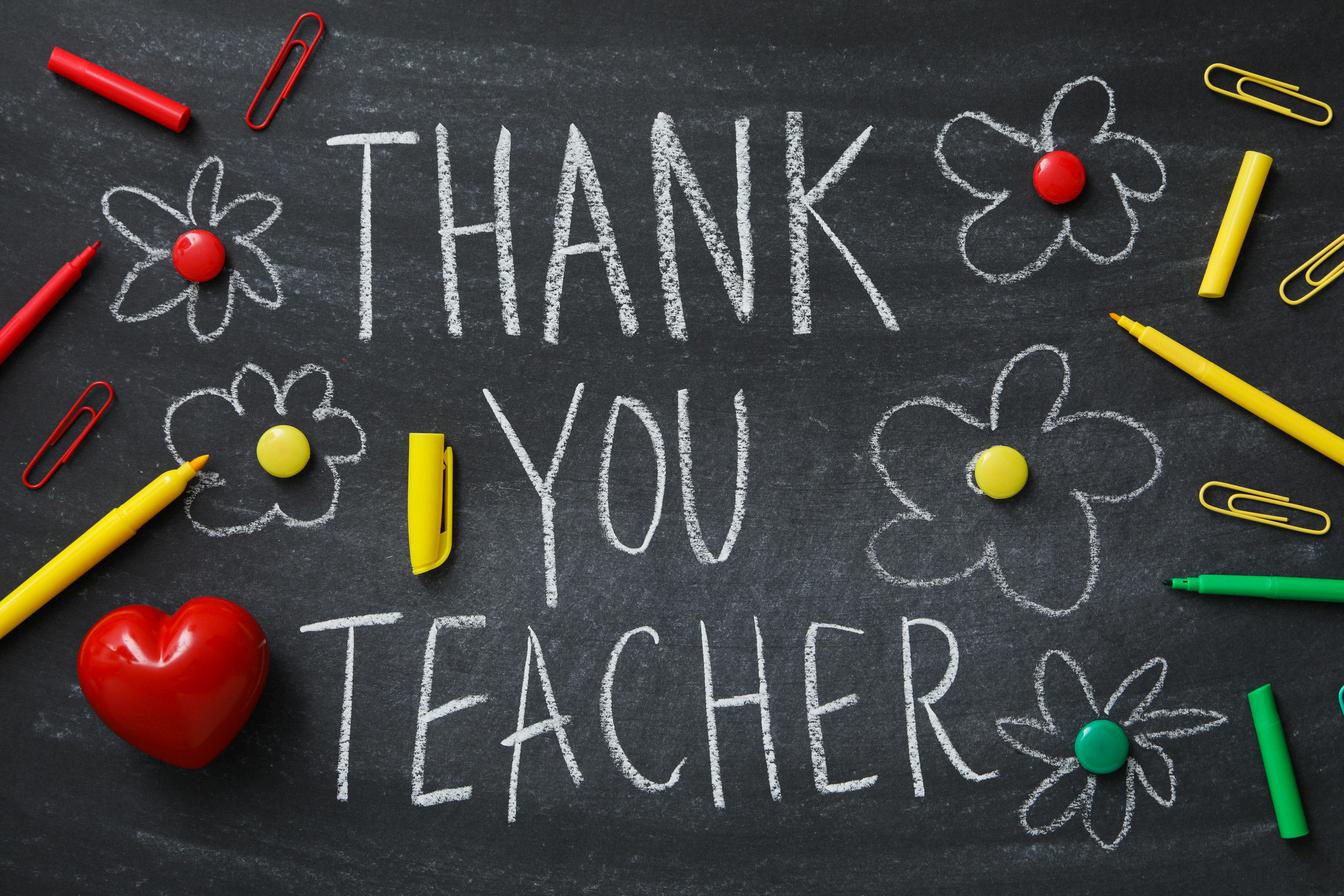
What you can do:
Create an inclusive classroom that is genderneutral.
Students look up to you and notice how you think about them. Set high expectations for all. Make STEM a social activity: Promote collaborative, hands-on, project-based experiences focusing on communication and teamwork and encourage exploration, imagination, and ownership of the learning products Assign specific roles to students irrespective of gender and cultivate critical thinking and personal discoveries These approaches foster greater STEM identities Provide specific, positive feedback on effort, strategies, and behaviors to improve selfconfidence Enable students to learn from failure and emphasize that skills can be learned through practice and problem-solving
22|STEMCREWMAGAZINE
School administrators
What the research says: You don't need to be a STEM school to encourage inclusive teaching of STEM 6,7
What you can do:
Build connections with industry and community organizations that promote STEM education Create programs that all students can participate in regardless of ability or gender
Hire staff that focus on the whole child and have proven competencies in teaching STEM inclusively
Provide leadership in cross-grade and intra-school STEM activities

References
1
Women in STEM make unique contributions to their industries, focusing on social good, promoting equality, and challenging dominant neo-liberal profit-driven motives3,7 Changing our deeply ingrained cultural and social understandings of what it means to do and be STEM will take time. In the process of change, we give girls and women more support and recognition of their strengths in an inclusive way that benefits not just girls but everyone else who needs to help fulfilling their dreams in STEM.
Women represent about half of workers in science and technology [Internet] ec europa eu Available from: https://ec europa eu/eurostat/web/products-eurostat-news/-/ddn-20210511
2. Fernandez F, Froschl M, Lorenzetti L, Stimmer M. Investigating the importance of girls’ mathematical identity within United States STEM programmes: a systematic review International Journal of Mathematical Education in Science and Technology 2022 Jan 25;1–41
Women in STEM in 2022 | Randstad Canada [Internet]. www.randstad.ca. Available from: https://www randstad ca/employers/workplace-insights/women-in-the-workplace/women-in-stem-where-we-arenow/
3. Hug S, Eyerman S. “I Like That Girl Power”: Informal/Formal Learning Ecosystems that Support Young Women’s Engagement in STEM International Journal of Gender, Science and Technology 2021 Nov 30;13(2):110-33
5
4. Sultan U, Axell C, Hällström J Bringing girls and women into STEM?: Girls’ technological activities and conceptions when participating in an all-girl technology camp International Journal of Technology and Design Education 2023 Sep 4;
Leammukda, F , An In-Depth Focus on An Emerging STEM School, A Community-Based Framework for STEM Integration, and Fostering Students’ STEM Interest [dissertation] Minneapolis, (MN): University of Minnesota; 2019
6 Yang K, Awad KG, Gramaglia MM, Kelly RJ, Kopec SE, Luzio NJ, Neptune KT, Pfau MJ, Purviance JL Girls and women in STEM: A review of interventions and lifespan developmental considerations for increasing girls’ and women’s participation in STEM 2019 Available from: Girls and Women in STEM (stockton edu) 7 Ndaruhutse S, Jones C, Riggall A Why Systems Thinking Is Important for the Education Sector Education Development Trust. 2019. Available from: https://eric.ed.gov/?id=ED603263 8
About the Author
Michelle Dusko Biferie is a doctoral student at the University of British Columbia, Canada Her research interests include STEM education, digital learning and resiliency
www.ubc.ca
https://calinkedincom/in/michelle-dusko-biferie-aaa9a946? trk=people-guest people search-card

23|STEMCREWMAGAZINE


WANTTOPUBLISHA CHILDREN’SBOOK? CONTACT US: WWW.PUBLISHTHERIGHTBOOK.COM Turn your career into a children’s book!
Dani’s Declassified Guide: Award Application Success and Resources
By Danielle Schroeder
This is a part 2 from “Dani’s Declassified Guide: Scholarship Success and Resources” that was included in the STEM Crew Magazine Fall 2023 Issue.
As someone who has been selected for several awards as both a student and now as an early career professional, I have learned a great deal about award applications Below are six tips from my personal experience on individual award applications that I hope can help you!
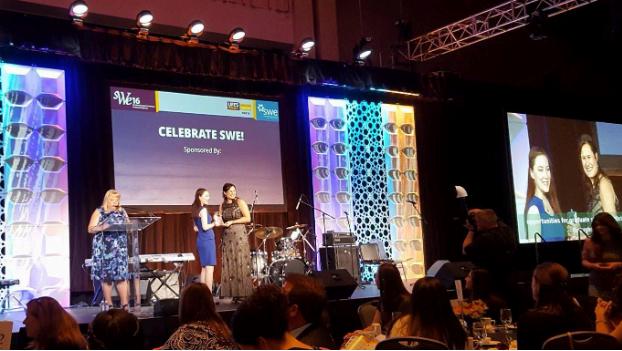
1. Review Eligibility Criteria and Requirements
There are so many awards out there, so one of the best tips I can give is to take the time to review the award packet or call for applications thoroughly to check that you are eligible for this award. Unlike job descriptions, I would not recommend taking the time to submit to an award if you don’t meet the qualifications listed, such as years of experience, society membership, or age requirements For example, the Society of Women Engineers (SWE) includes the following in their call for award applications: “Nominees who do not meet requirements listed in the Qualification section of the intended award will be disqualified ” Ensuring you are eligible before starting any award application is important because it takes a lot of time to assemble an excellent one
2 Prioritize Securing Letters of Support and/or Being a Nominator
There are many parts to award applications, but two of the most crucial are letters of recommendation and a nomination Not all awards require these, so it is important to read through the award instructions as given If they require a letter or multiple letters, I recommend prioritizing this to give your letter writers ample time to write these letters so they can be submitted on time! A good practice is to provide at least 3 weeks of notice before it is due to respect the time of whomever you ask. While some applications allow you to self-nominate, I highly recommend having someone nominate you whenever possible.
Also, don’t forget to send the person who took the time to write you a letter, a thank-you email, or a handwritten note after you receive the award!
3 Reach Out to Previous Award Recipients for Advice
As most places announce their award winners publicly, it is easy to find out who has won a specific award in the past. The first award I ever applied to was SWE’s Outstanding Collegiate Member, so prior to the award submission deadline, I reached out to a previous winner of this specific award with a few questions She was super helpful, and I would bet that most past award winners are more than willing to answer questions about their experience!
2016 SWE Awards Reception receiving my award from the FY17 SWE President
25|STEMCREWMAGAZINE
4. Keep Past Award Essays and Applications in One Place
This tip boils down to working smart, not hard Award applications tend to ask you similar questions, so I have been able to reuse paragraphs from my past award applications in newer applications which saves time
Some questions I have seen:
Describe the nominee’s contributions to the profession
Was there one particular individual or event that inspired you to become an engineer?
I keep my past award applications and essays in a Google drive folder, but any central place is good
Also, as someone who still struggles with imposter syndrome and talking about my accomplishments, this folder can also be used to hype yourself up after a long day!
5. Show the Numbers
When filling out the actual award application, the best advice I can give you is to quantify your impact whenever possible This means taking “Created opportunities and provided resources for curriculum support and hands-on learning throughout the Philadelphia region about civil engineering” to “Created opportunities and provided resources for curriculum support and hands-on learning for over 1000 students at 9 different schools throughout the Philadelphia region about civil engineering” As I am passionate about STEM Outreach, I have been tracking my hours of student outreach impact in an application called Notion since 2019 This has given me awesome metrics that I often use in my award applications As you can see “Since 2019, Danielle has frequently led and volunteered at STEM Outreach events ” is great to include However, adding in numbers like the following example really shows the positive impact I have made: “Danielle has impacted over 3000 students in 2019, 1000 students in 2020, and over 1400 students in 2021 through her involvement with in-person and virtual STEM outreach events.”
Finding something outside of your work and tracking your impact quantitatively can set your award application apart!
6. Do Not Be Afraid to Apply Again!
I applied for a few awards, like one of the SWE WE Local awards, but I did not receive them the first time The following year, I updated the application, got several folks to review it (including a past award recipient), resubmitted it, and was awarded it then. If you don’t receive an award one year, don’t let that keep you from applying again the following year!
Feel free to contact me at DaniTheEngineer Blog@gmail com with any questions about award applications Good luck with your future award applications!


AbouttheAuthor
Danielle Schroeder, PE, ENV SP is a Civil Engineer in the Transportation Industry in Philadelphia, PA She graduated from Drexel University in 2017 and received her B S and M S in Civil Engineering through Drexel’s accelerated degree program She is a licensed professional engineer in Pennsylvania and a certified Envision Sustainability Professional (ENV SP) She is highly involved in several professional organizations including the Society of Women Engineers (SWE), Women's Transportation Seminar (WTS) , and the American Society of Civil Engineers (ASCE) For her work with these organizations and her extensive outreach work, Danielle was honored as one of ASCE's New Faces of Civil Engineering in 2021 Danielle focuses on the rehabilitation of the physical infrastructure of the past through her job, and she inspires future STEM professionals through her STEM outreach. She has inspired thousands of students through her in person and virtual STEM outreach events since 2019. As the first engineer in her family, she uses her well-established blog STEMchangemaker org and her social media pages to share advice based on her journey as an engineer in the transportation industry and to educate the public that engineering is an excellent career choice for women In her spare time, Danielle enjoys traveling, snowboarding, playing tennis, and taking long walks with her partner, Doug, and their rescue dog, Nemo
www.stemchangemaker.org @STEMChangemaker @STEMChangemaker https://www.linkedin.com/company/stem-changemaker @STEMChangemaker 26|STEMCREWMAGAZINE

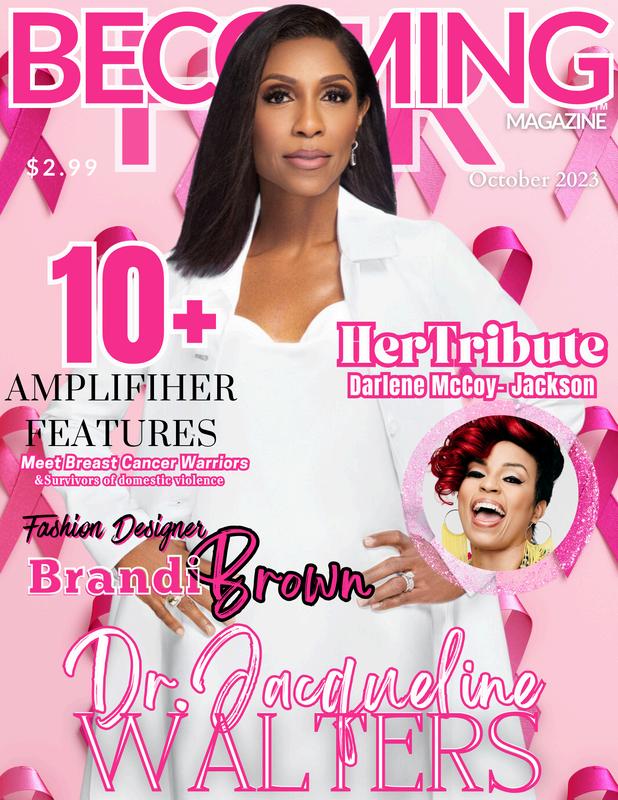
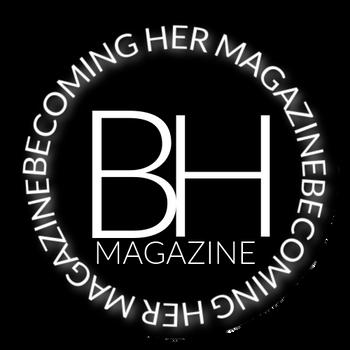
WANT TO START YOUR OWN DIGITAL MAGAZINE? INFO@BECOMINGHERMAGAZINE.COM BECOMINGHERMAGAZINE.COM
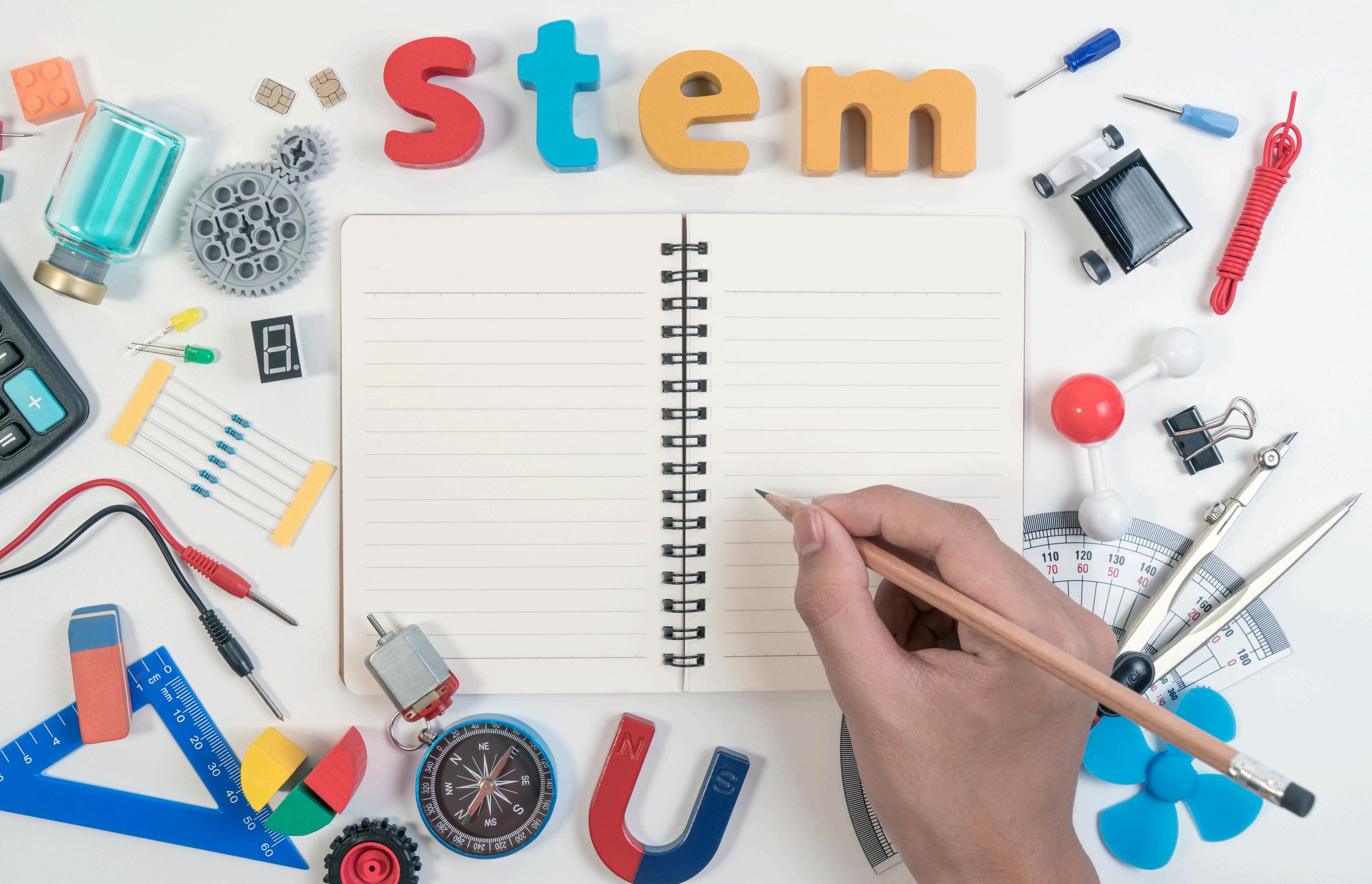
14 AMAZING STEM TRAILBLAZERS

Fenyx Blue
Fenyx Blue, a dynamic literary figure, encompasses boldness, love, and selfexpression. An international #1 Best Selling author, she pens diverse works, from YA novels to children's books. As a YouTuber (FENYX BLUE INK), speaker, and mentor, she wears many hats, celebrated as a former Teacher of the Year. Passionate about fighting bullying, she founded Team BFF and leads anti-drug initiatives. Blue, a dedicated member of a team of award-winning instructional coaches, has created a company called Creative Solutions Coaching to support new and veteran teachers and coaches. Rooted in Illinois, and a mother of three, Fenyx finds joy in travel and gardening. Follow her @FenyxBlueInk for inspiration and impact.
Q. Can you briefly share your journey into STEM and what led you to pursue it?
A. I never dreamed I'd be in STEM. I am a creative spirit who wanted to be an author one day. I was an avid reader so I did very well in all subjects that were connected to reading. When I got to college, I fell in love with mentoring other students and decided my English degree to go into education. Once I became a teacher, I noticed that many of our students were not choosing to go into STEM fields. They enjoyed science experiments, but they didn't know possible careers in Science. They enjoyed playing video games and being entertained through technology, but they didn't know how the tech worked. Some of them were kinesthetic or detailoriented learners, but didn't realize they could be engineers.
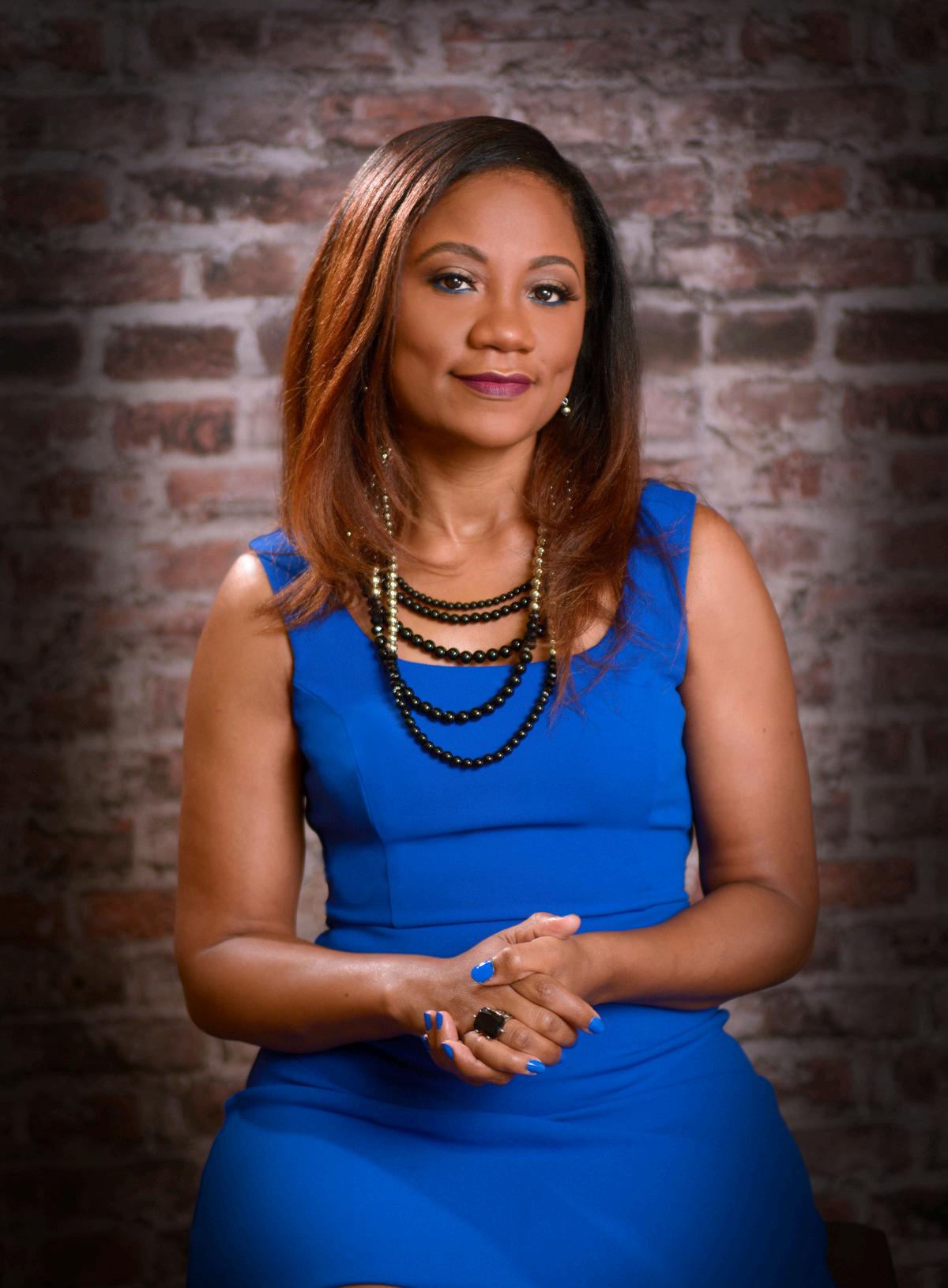
My female students had mathematical minds, but did not know of many female role models who had used that skill in banking, for NASA, or in any job. I found myself purposely exposing them to STEM Careers and possibilities. I volunteered to share my story and to teach business planning and financial literacy. Exposure and Education were my roads into the world of STEM. My book is set in a STEAM classroom on purpose because I wanted my students to know that STEM and STEAM classes exist. Through sharing my own journey, my books, mentoring, coaching, and teaching, I will continue to help our youth to grow, rise, and stetch out their branches. When I think of the word STEM, I instantly think of potentila for growth. I know that our scholars have powerful potential.
29|STEMCREWMAGAZINE

Q. What advice do you have for parents and educators who want to encourage children to explore and excel in STEM?
A. Start Early. Scholars are sponges eager to learn as babies, toddlers, and preteens. Find free or cost-effective events in your community to expose your children to science, technology, engineering and math. There are many programs that offer internships, mentoring, and opportunities to play, experiment, and be around likeminded students. The library and local schools offer summer programming so feel free to suggest STEM programming for students of all ages. Expose your child to anything that involves critical thinking and problem-solving.
Q. Can you share a significant obstacle you faced in your STEM journey and how you overcame it?
A. As a teen, I was a mathlete. As a child, I was featured in the newspaper for my scores in math. I was taught how to calculate percentages, how to mutiply, divide, add and subtract. However, noone taught me about money in school. I didn't learn about taxes until I got my first paycheck. I didn't learn about loans or credit until I went off to college. I found myself in debt until I taught myself that math is important in real life. A fellow teacher shared that she used her cash back each year to buy Christmas presents. That got me excited. I wanted to learn more about profiting from my purchases. Suddenly, I started reading as much as I could about finances, credit, debt, insurance, liabilities and assets. Thanks to videos, books, and humans willing to share their wisdom, I learned to master my own money and money mindset.

Q. How do you believe your work in STEM contributes to solving real-world problems or advancing society?
A. As an author, you dream of your book changing someone ' s life. My character learns that solving real-world problems is exactly what good businesses and successful entrepreneurs do. As a teacher, I have the opportunity to teach students early the vocabulary and skills they will need in the future so they will be more prepared for their future. It was a pleasure to discuss stocks, profit, currency, and money mindset at our STEM night at school because I know that this new generation will be equipped for success early. As an entrepreneur, Wisdom Works, LLC., I encourage youth to start their own businesses and share my process for learning purposes. When young girls and boys see me, they have evidence that it is possible to thrive in business.

@fenyxblueink www.fenyxblueink.com
30|STEMCREWMAGAZINE

IGNACIA BUSTAMANTE
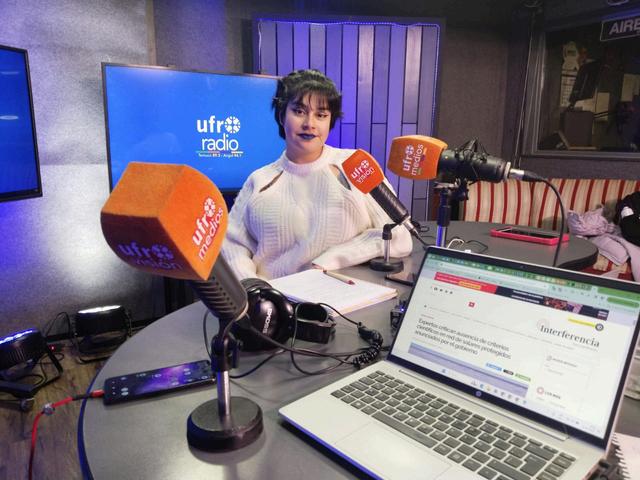
Ignacia Bustamante is a passionate advocate for science and education from a young age, in La Araucanía, Chile She has already made remarkable strides as an activist and communicator Graduating with honors from Academia Atómicas x Tremendas, an initiative bridging the gender gap in STEM fields, she went on to volunteer with the foundation and coordinate its biological sciences program. Selected for the prestigious "Young Ambassadors" program in 2021 and 2022, Bustamante currently serves as the STEM spokesperson for Tremendas and alliance coordinator for the National Youth Conference on Climate Change A panelist on "Efecto Ciencia" radio show, she shares her expertise in bioinformatics, biotechnology, AI and bioremediation through workshops and outreach. The youngest ambassador named by "100 Women Leaders Araucanía" in 2023, this trailblazing Biotechnology student at Universidad de la Frontera continues inspiring the next generation.
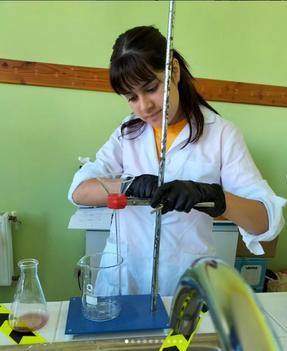
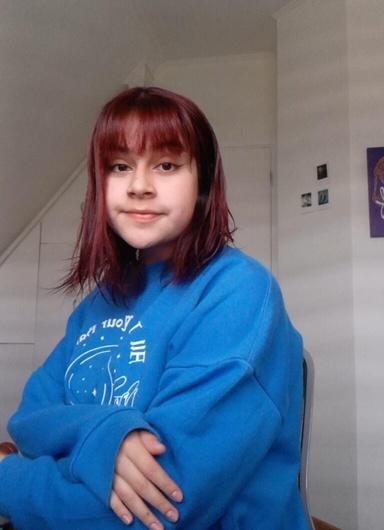
http://tremendas.org


@tremendascl
@natchbtte
31|STEMCREWMAGAZINE
Tremendas Spokesperson
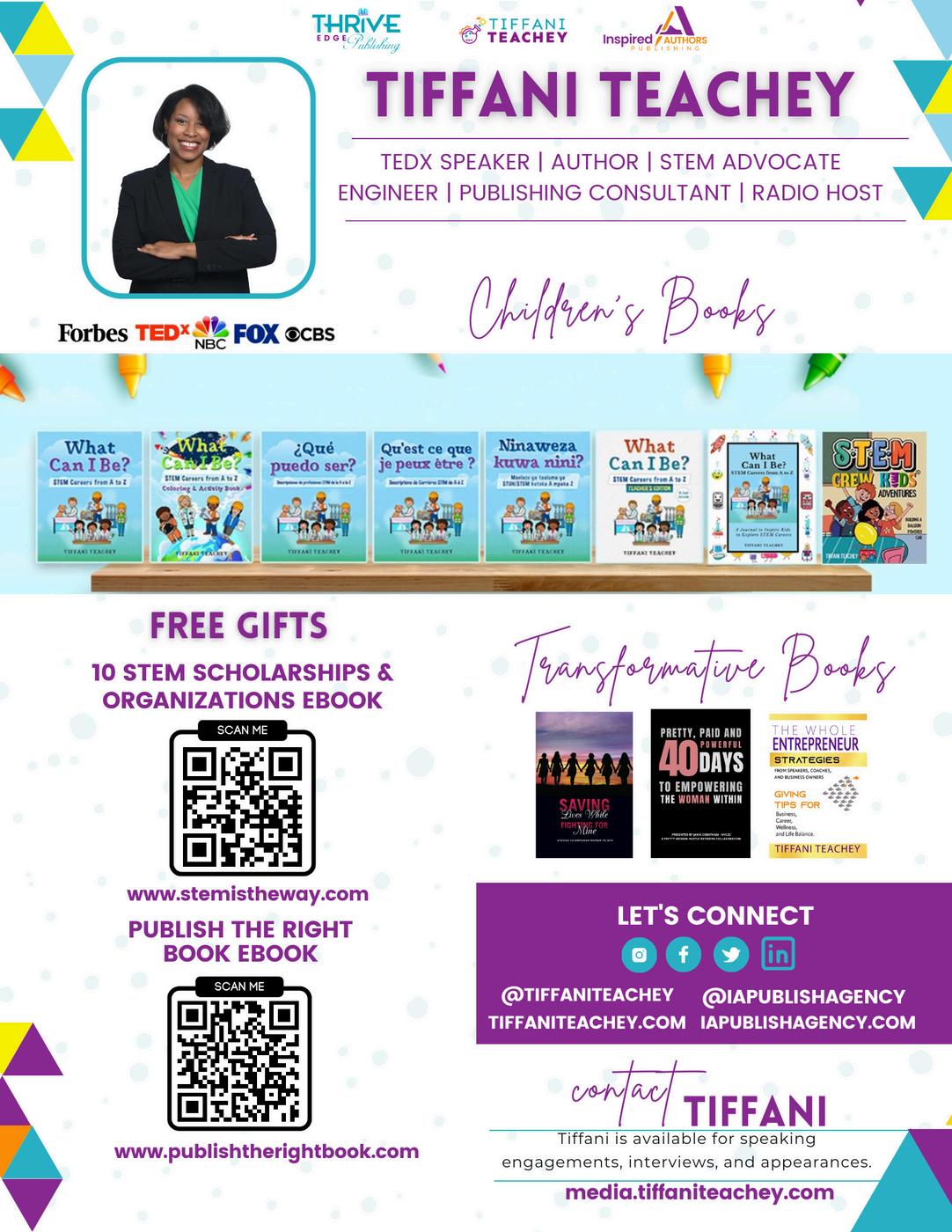
FAITH GATHUNGU
Faith is the CEO and Master Franchisee of Young Engineers Kenya, an educational program that provides theoretical knowledge and practical implementation in Science, Technology, Engineering, and Mathematics (STEM) basics. As a STEM enthusiast, Faith provides an environment that enables the next generation of innovators in Africa to acquire 21st-century skills by creating critical thinkers and increasing science literacy and problem-solving skills. Before Young Engineers Kenya, She acquired a wealth of experience in General Management, Corporate finance, Commercial and Business Strategy, Business model generation, having spent over 15 years in leadership roles within the events, manufacturing & education sectors in East & South Africa. Faith holds a Master in Management (PDM) from the Wits Business School in Johannesburg. She also holds a Bachelor of Commerce in Finance & Business Administration from Daystar University in Kenya. She holds the Golden Key International Honor Award.
Q. Can you briefly share your journey into STEM and what led you to pursue it?
My journey is inspired by my two children who are into STEM subjects When they were young i volunteered in their schools to read books and often took them for extra curriculum activities and sit through the activities Our favorite one was Bricks n blox which gave me a new way of learning concepts My interest and curiosity took me into researching online and thats how i came across Young Engineers pedagogic guidelines In school my favorite subjects were Mathematics and commerce and running my own business was always in the cards for me
I knew the kind of business i would run passionately would involve children entertainment or women empowerment . My STEM Journey started in 2017 after launching our program in Kenya. The journey has been mixed emotions with great highs to equal lows during covid season. We have been able to teach over 3,000 students both online and in person for the last 6 years . We have launched our programs in international schools, private local schools, public schools in partnership with Rotary club of Langata and our favorite one the Kenyatta Hospital oncology Pediatric ward .

33|STEMCREWMAGAZINE
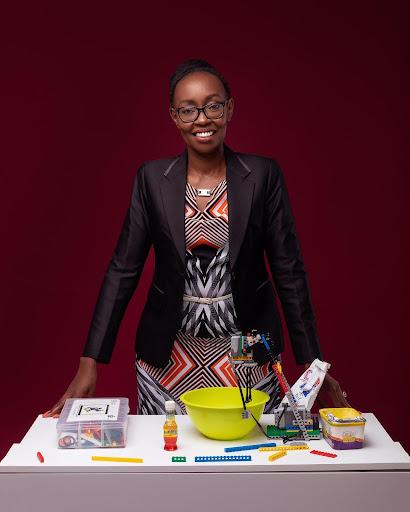
Q. Is there a motto or philosophy that guides your work and life in STEM?
A. Our philosophy is all about providing a fun way of learning science and to offer parents a solution of reducing the screen time between ages 3 years to 16 years We are providing 1 54 Million learners in Kenya an opportunity to learn 21st century skills which are collaboration, problem solving skills, critical thinking and creativity Our motto; Building our Tomorrow Today!

Q. Were there any pivotal moments or role models who influenced your decision to enter STEM?
A. MY pivotal points was the moment my daughter who is STEM Girl realized she learned best through experiential learning of science using bricks This inspired me to research programs that offered learning through bricks Furthermore i met the Franchise owner of YOUNG ENGINEERS SOUTH AFRICA who influenced my decision to become a Franchise owner
Q. Can you tell us about your efforts to promote STEM education and awareness?
A. We have created awareness about STEM through collaborations and partnerships. So far, we have created termly interschool competitions and our first Pan Africa competition, which was held in November 2023. We look forward to hosting one each year in our different African countries. We are also working in partnership with the scout movement, Young Scientists of Kenya, Ed Tech East Africa, Kenya Space Agency, and youth banking to Promote STEM.

YoungengineersKenya Youngengineerskenya youngEngineersKE
34|STEMCREWMAGAZINE
Youngeng-ke
www.youngengineers.org

A
Y E S
H A I F T I Q H A R - W I L S O N
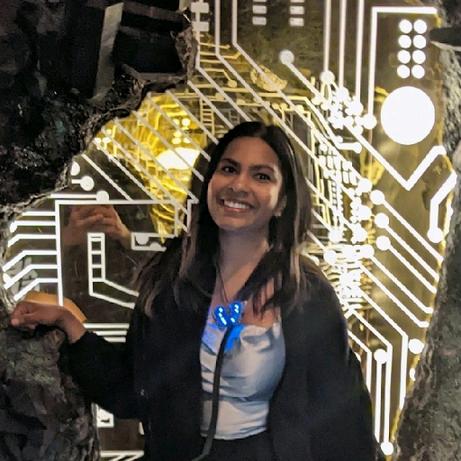
I enjoy applying Electrical Design and Embedded Systems concepts to solve interesting and meaningful problems. I have used my engineering skills to develop IOT-connected sensors for the restaurant industry to reduce water and power consumption in industrial dishwashers. I also developed battery management systems and BLDC motor control systems for Ryobi power tools to replace gas power tools. I am designing electronics for a robotics startup to build a fleet of robots to provide services like harvesting, forecasting, and pest treatment to help farms be more sustainable and resilient to climate change.
My strengths as an engineer are quick electronic prototyping using my skills of circuit design, PCB design, and firmware development. I work well in cross-functional teams and enjoy a fast-paced environment of constant learning and growth. Outside of work, I create hobby electronic projects and share them in open-source formats to improve the accessibility of engineering education.

ayesha.iftiqhar
35|STEMCREWMAGAZINE
Sr. Electrical Engineer at Lightship RV
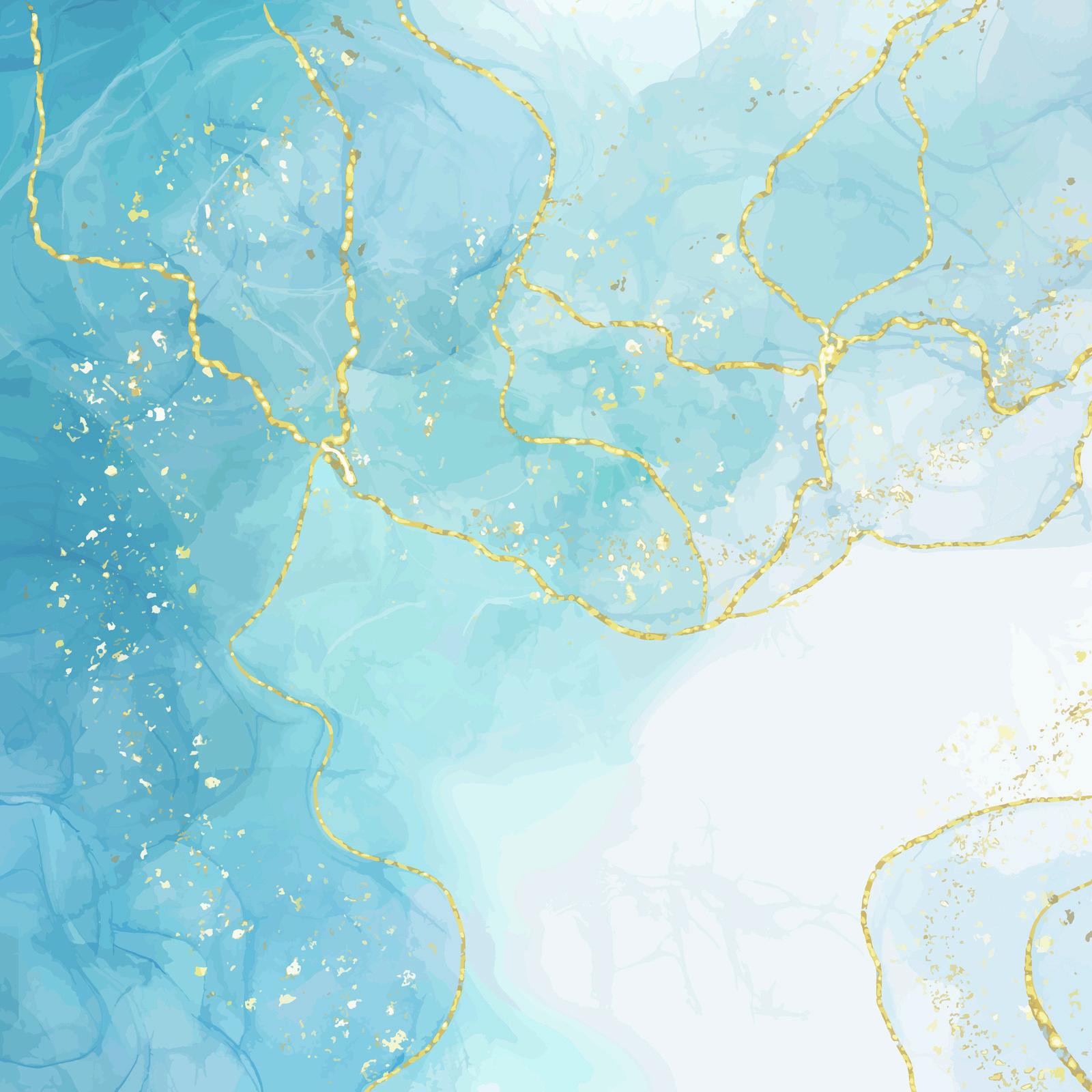
SHELLI JOHANNES
Shelli R. Johannes is a prolific author with a diverse range of books for children and teens under her belt. Her works include the popular Cece Loves Science series, Penny (An Engineering Tale of the Fourth Pig), and the Farm Friends series. She has also authored the Theo Thesaurus series, Shine Like a Unicorn, and Florence Nightingale (in Chelsea Clinton's "She Persisted" series.) For teens, Shelli has received critical acclaim for her novels, including the Nature of Grace series (Untraceable, Uncontrollable, Unstoppable), ReWired, & On the Bright Side. With 25 books to her name, Shelli's literary contributions are a testament to her creativity and storytelling prowess.
After a successful career in marketing, where she donned heels and suits as a corporate executive, Shelli made a bold decision. She swapped her corporate attire for a more casual ensemble of flip-flops and jeans, all in pursuit of her true passion. Today, Shelli's days are filled with crafting captivating stories, saving stray animals on highways, and volunteering with animal conservation groups like the Atlanta Zoo, the Dolphin Project, and Bosley’s Puppy Orphanage.
Shelli lives in Atlanta with her pack of animals: a British husband, two kids, one sassy bird, one fish, two Goldendoodles, and the many loud characters that “live” in her head. Shelli is addicted to exclamation points, puns, unicorns, and anything sciencey. You can always count on her to laugh at her jokes at least once.

@srjohannes
@srjohannes
@srjohannesauthor
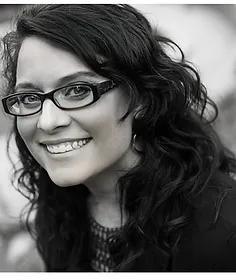

36|STEMCREWMAGAZINE
Lily Li
As the passionate Founder and CEO of Global Science and Medicine, Hao (Lily) Li is on a mission to empower diverse students worldwide to engage with STEM fields through the power of education. With a deep-rooted love for science and medicine, Lily's journey has been fueled by firsthand experiences that sparked her interest in scientific research and the transformative impact of learning
Driven by a commitment to providing equitable opportunities, Lily has dedicated herself to creating a platform that transcends geographical boundaries Global Science an Medicine serves as a catalyst, enabling students from all corners of the globe to explore, collaborate, and thrive in science, technology, engineering, and mathematics.


Under Lily's visionary leadership, the organization has become a hub for fostering curiosity, nurturing talent, and empowering the next generation of innovators. Her unwavering belief in the power of education has inspired a team of passionate individuals who share her vision of making STEM education accessible to all.
With a keen understanding of students' challenges, Lily has crafted a comprehensive approach combining hands-on learning experiences, mentorship opportunities, and a supportive community. By breaking down barriers and providing an inclusive environment, she aims to ignite a lifelong passion for STEM disciplines among learners of all backgrounds.
Lily's role extends beyond leading the team; she is a tireless advocate for Global Science and Medicine, fostering collaborations and partnerships that amplify the organization's impact. Her open-door policy encourages students, educators, and industry professionals to engage, share their insights, and contribute to the collective mission of shaping a future where STEM education catalyzes positive change
Driven by an unwavering commitment to excellence, Lily Li pushes boundaries, ensuring that Global Science and Medicine remains at the forefront of innovative STEM education initiatives, inspiring and empowering young minds to become the leaders of tomorrow.

https://www.linkedin.com/company/global-science-medicine
@global_science_medicine @GlobalScienceMedicine
37|STEMCREWMAGAZINE

Aisha Lawrey
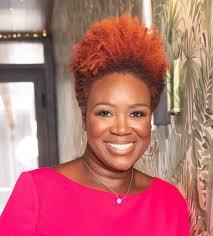
STEM advocate Aisha Lawrey has 25 years of experience on this journey. Working in industry, government, nonprofits, and education, she knows how to engage many stakeholders at all levels. Her focus is on increasing the number of women and minorities in engineering. Aisha works for AWS (Amazon Web Services), as the Training & Certification Global Education Programs Ambassador, AMER (North, Central, and South America). Her role represents all the Education Programs spanning K-12, higher education, and professional skilling, reskilling, and upskilling learners The goal is to show multiple
pathways to learners that lead to professionals joining the cloud workforce. Before joining AWS, Aisha worked at the National Action Council for Minorities in Engineering (NACME), Inc. as the Senior Director of programs and Scholarships. She was responsible for planning, directing, and executing all scholarships and program activities. She was also the Director of Engineering Education with the American Society of Mechanical Engineering (ASME). She directed and guided ASME's work in helping to shape the future of mechanical engineering and engineering technology. She is currently an AAAS IFTHEN STEM Ambassador and even has a 3D-scanned statue in her image. Aisha obtained degrees in Engineering Education, Public Policy and Administration, and Electrical Engineering A New Jersey native, Aisha resides in Maryland with her husband and 16-year-old twins.

@akbosslyfe
38|STEMCREWMAGAZINE


Michael Newman









Meet Michael Newman, an influential figure in education's digital realm, renowned for his substantial following within the educator community. Currently, he excels as a 3rd-grade math and science teacher in Texas, where his passion for STEM education shines through. Serving as the Lead STEM Teacher for his school district, Michael brings innovative teaching methods to the forefront, shaping the educational landscape for future generations. With a master's degree from Lamar University in educational technology leadership, Michael blends his academic expertise with hands-on experience in the classroom. His journey in education spans across various grade levels, including teaching 1st and kindergarten, fostering a deep understanding of early childhood development and learning strategies. Driven by a commitment to excellence and a dedication to empowering students, Michael continues to inspire educators and learners alike, leaving an indelible mark on the world of education.


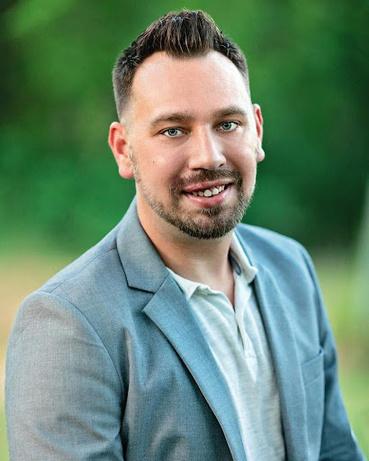
Q. Can you briefly share your journey into STEM and what led you to pursue it?




A. My journey into STEM began as an early childhood teacher, where I discovered how STEM can unlock students' creativity, knowledge, imagination, and collaboration skills. Transitioning to teaching 3rd-grade math and science and becoming a district-lead STEM teacher, I saw the transformative power of STEM education firsthand. When approached to bring STEM Academies to our school district, I saw it as an opportunity for students of all ages to grow, imagine, create, and solve real-world problems. It provided an equal playing field for all students, regardless of their background or abilities, reaffirming that STEM is for everyone.



39|STEMCREWMAGAZINE





Q. What advice do you have for parents and educators who want to encourage children to explore and excel in STEM?




A. My advice for parents and educators keen on fostering STEM exploration and excellence is simple: Just do it! Provide children with opportunities to collaborate, communicate, and create STEM projects. Introduce Makerspace, which offers a blend of nonstructured STEM lessons with,
guidelines, allowing children to unleash their creativity. In classrooms, integrate STEM with literacy, such as incorporating stories into engineering challenges. Utilize Makerspace carts with various building materials and present students with challenges. At home, encourage children to gather household items and create, incorporating outdoor exploration. Remember, STEM is about the joy of creation, where there's no right or wrong, only the vision of the engineer. Embrace STEM as an engaging teaching style that should be embraced both at home and in schools.



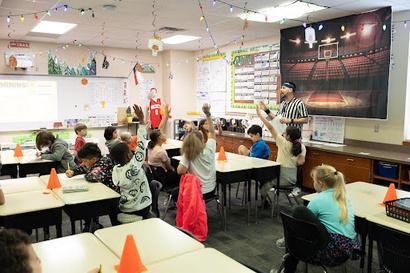







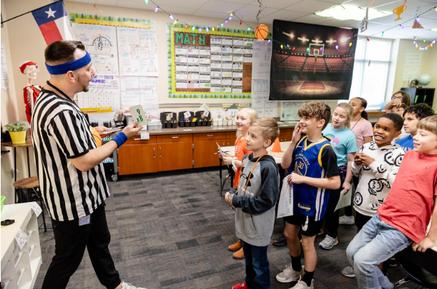



@theevolutionaryclassroom
40|STEMCREWMAGAZINE

AMANDAOBIDIKE
Amanda Obidike is the Founding Curator of the World Economic Forum (WEF) Global Shapers, Ozubulu hub, where she leads dialogues and engages communities on future-focused skills, youth, and social development
She is a Certified Professional in STEM Education by the Open University, United Kingdom, and Executive Director of STEMi Makers Africa In this role, she provides leadership strategy management. She oversees the design and implementation of sustainable Community projects across 17 Sub-Saharan countries by preparing the next generation of Africans with lucrative STEM skills to become experienced members of Africa's workforce.
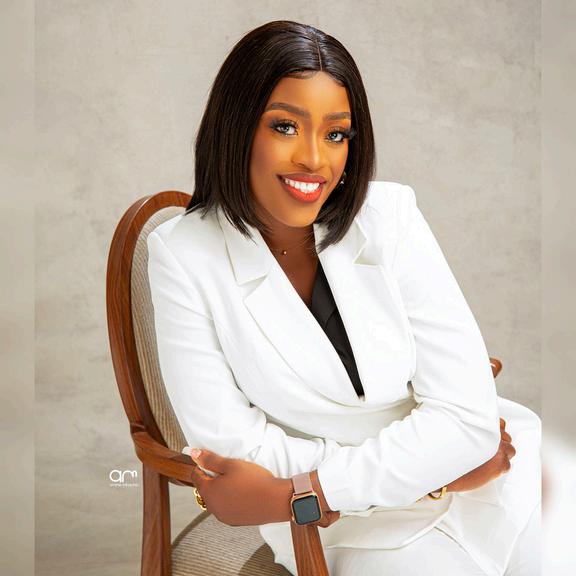
Forbes Science marked her as the Nigerian changing the culture fabric for young girls to embrace STEM. In addition to STEM, Amanda addresses thematic topics of Capacity building, Data Science, Youth empowerment, and reform in the Education Curriculum. She serves as a Mentor in the Cherie Blair Foundation, the 1 Million Women in Tech, and Global Thinkers for Women, where she lends her voice and knowledge and is a role model to African girls.
Recently, she was given the Positive Impact Award of Athena 40: The World Most Innovative Women, 2020; 100 Leading Ladies in Africa, The Technology Rising Stars Award, Michigan, USA, and Role Model Finalist in Booking com Technology Playmakers Awards for successfully championing diversity for the girl child
Amanda Obidike sits on the Board of Directors for Global Youth Initiative She is an Ambassador of Global Peace Chain, Nepal, and Currently writing Research on "Digital Transformation for Development: e-learning, lifelong Learning and Education Strategy", a Research presented to West and Central African Research and Education Network (WACREN)
Q. Can you briefly share your journey into STEM and what led you to pursue it?
A. My journey in STEM began in 2015 when I was under-employed and depressed. Being underemployed made me realize that 83 5% of graduates lack the technical skills for lucrative and meaningful jobs in Nigeria After an opportunity to be trained by IBM in Data Analytics, I decided to build an “Africa By Us, For Us'' ecosystem that prepares diverse young talents with future-focused options in STEM lucrative pathways to become more experienced for Africa’s workforce My goal addresses the leaky unemployment pipeline, the under-representation of
41|STEMCREWMAGAZINE


young women and girls in STEM, and the integration of STEM education in classrooms across Sub-Saharan Africa.
In 2018, I founded STEMi Makers Africa, where we boost employment, innovation, and inclusion and aim to empower a talent base of 2,000,000 young Africans with emerging technologies and real-world problem-solving skills to excel in STEM pathways, shape the Future of Work, and contribute to the development of our changing workforce by 2030.
Q. How do you believe your work in STEM contributes to solving real-world problems or advancing society?
A. STEM is a contributing factor to the Socioeconomic development of African communities. Unlike other teaching pedagogy, STEM education is a dynamic pedagogical
approach that surpasses traditional teaching methods and cultivates technical and 21stcentury skills through real-world problem-solving. When countries are regarded as “wealthiest”, “leading” or “competitive “ , the determining factor is their level of technology, research, innovation and leadership. My primary interest is revolutionizing STEM education where welltrained educators will be able to bring their first-hand know-how in mentoring students, introduce an effective teaching system to enable educators integrate pedagogical techniques and fully understand the ways students absorb STEM concepts
7 in 11 Educators (nearly 65 percent in Africa) do not have access to practical teaching tools, project-based learning resources, and improved knowledge on STEM curriculum needed to be integrated in the 21st-century classrooms. This leaves a significant number of our youth without adequate education or skills and uncertain about their future. Globally, more than a fifth of individuals aged 15-34 are not engaged in education, employment, or training, and Africa records the lowest youth enrollment in education This challenge is further compounded by gender disparities, with young women less likely to be enrolled in education than young men
My work guarantees that school educators effectively teach challenging contents while integrating the multiple disciplines, foster critical thinking, problem-solving, creativity and serve as role models in enhancing students’ interest and competitiveness in STEM education.
www.linktr.ee/amandachirpy
42 |STEMCREWMAGAZINE
HillaryOdote
Hillary Odote is a 23-year-old Kenyan citizen dedicated to STEM education, mentorship, and youth empowerment He holds an associate degree (diploma) in Applied Biology and is pursuing a Bachelor of Technology at the Technical University of Kenya
With a profound passion for STEM subjects, Odote has carved a niche for himself as a mentor and advocate His areas of expertise lie in insect science and biological sciences, and he currently serves as an intern at the University of Nairobi's Department of Biology
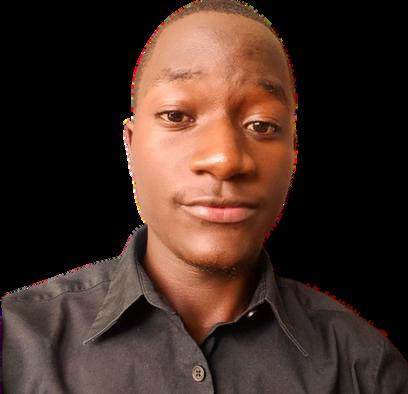
Odote has volunteered with Young Scientists Kenya for four years, supporting high school students in developing projects as a STEM mentor He also assists Young Engineers Kenya in developing STEM curricula for young learners, demonstrating his commitment to nurturing the next generation of scientists and engineers
Beyond his academic and mentorship roles, Odote is deeply involved in several youth-led programs focusing on peer support, sexual and reproductive health, and mental health His multifaceted approach reflects his dedication to holistic personal and professional growth, ensuring that young individuals can access comprehensive resources and guidance.
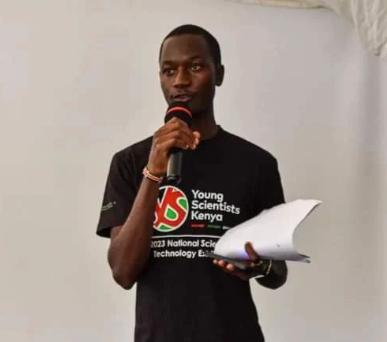
Odote's contributions have not gone unnoticed, as he was recognized as the Award-Winning Mentor of Kenya in 2021 and nominated for the Utumishi Bora Awards in 2022, highlighting his impact on the lives of young people
Through his unwavering commitment to education, mentorship, and community engagement, Hillary Odote leaves an indelible mark on the Kenyan STEM landscape, inspiring and empowering the next generation of scientists, engineers, and innovators

@odote_hillary
@Odotte_Hillary
@hillary.kodoteh

@officialodote_kenya
https://www.linkedin.com/in/hillary-odote

43|STEMCREWMAGAZINE
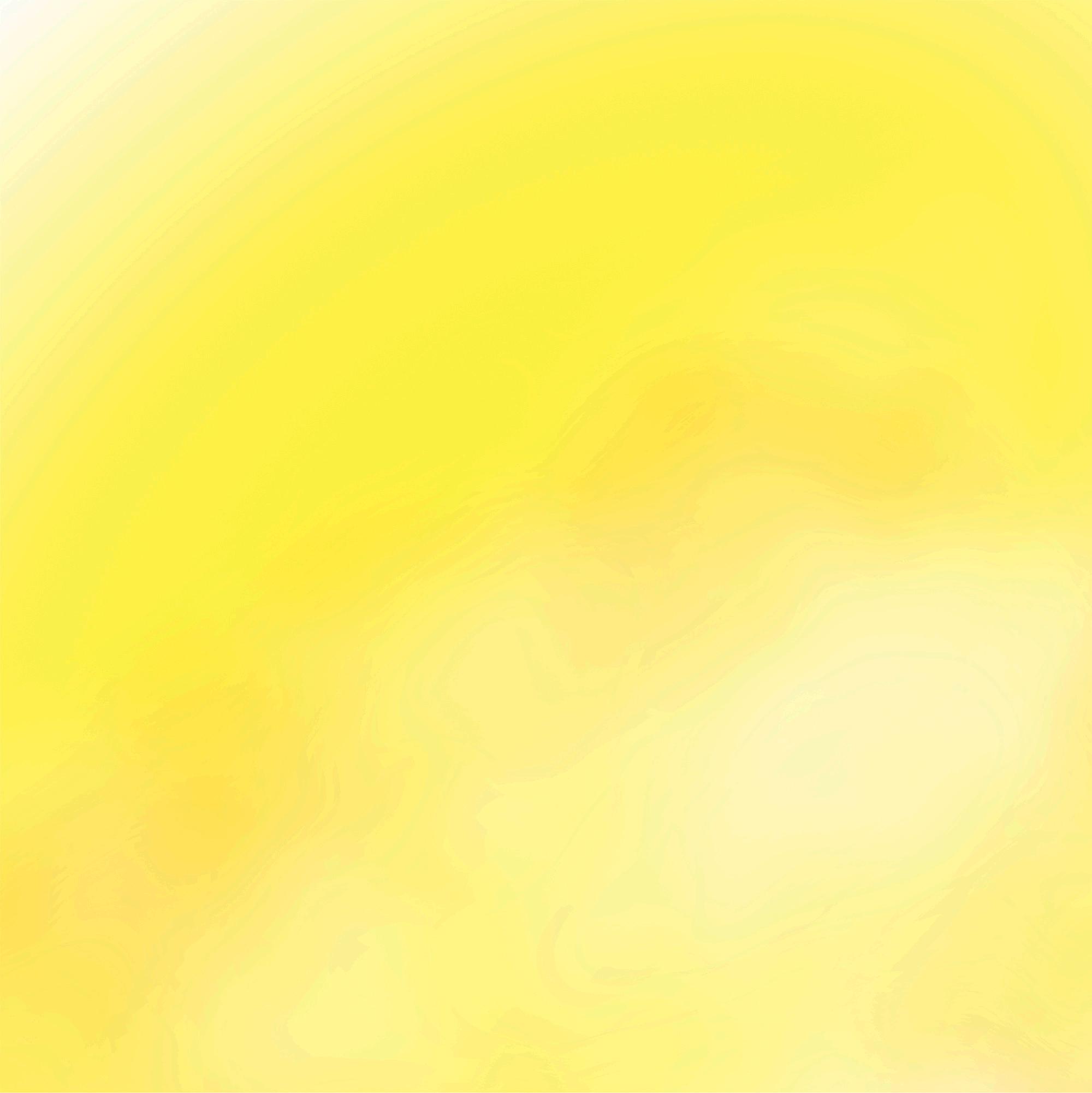
Namitha Somasundaram
Namitha Somasundaram is a DRAM Product Engineering Execution Manager with over 6 years of experience in Pre-Si Design and Verification and 5+ years of Program Management experience with Intel's NextGen ERG and Toastmasters. She is passionate about end-to-end product development and delivery for B2B customers and works with multiple stakeholders to drive revenue growth with Compute DRAM products.
As a passionate technologist, Namitha has

worked on cutting-edge memory technologies and 5G sub-systems, achieving production-quality silicon during her successful career at Intel. Stakeholder management is one of her strengths, which has helped her work out priorities with stakeholders in verification, design, and structural design. She has learned to plan and execute under pressure from her experience as a design and verification engineer.
Namitha's interdisciplinary thinking and passion for inclusion have served her well in her role with Intel's NextGen Employee Resource Group. Colleagues know her as a dependable independent contributor who excels in a team environment. Her proactive personality and calculated risk-taking capability are well appreciated.
Namitha naturally creates a lively work environment around her. She is passionate about mentoring others and, as a community change-maker, volunteers with Toastmasters International to help people overcome their fear of public speaking, mentor them in crafting their stories, and develop as leaders in the community.
Always open to engaging conversations about stock market investing, semiconductor technology, business, books, and travel, Namitha welcomes direct messages for further discussion.
https://www.linkedin.com/in/namithasomasundaram
44|STEMCREWMAGAZINE

M-T Strickland M-T Strickland
M-T is a Decatur, GA native that ended up at Missouri S&T through the Atlanta University Center Consortium’s Dual Degree Engineering Program (AUC DDEP). After attending Morehouse College (Atlanta, GA) where he studied Mathematics, M-T traveled to Rolla, MO to complete a BS in Electrical Engineering focusing on Programmable Logic Controllers. The opportunity he is most proud of is his work with the 21st Century STEM Foundation. After serving the students directly for 4 years, M-T moved to becoming Director of Development helping expand the brand and raise funds to supportthefoundation'sgrowth.AsCo-Founder & CEO of Metric Mate, a data analytics company withapatentedTrainingAccountability Partner
(T.A.P.) technology that turns resistance training equipment into SMART equipment to motivate users with leaderboards, competitions, NFT, and more, taking fitness in our current social media landscape into the metaverse; M-T wants to help everyone live happier,healthierlives.

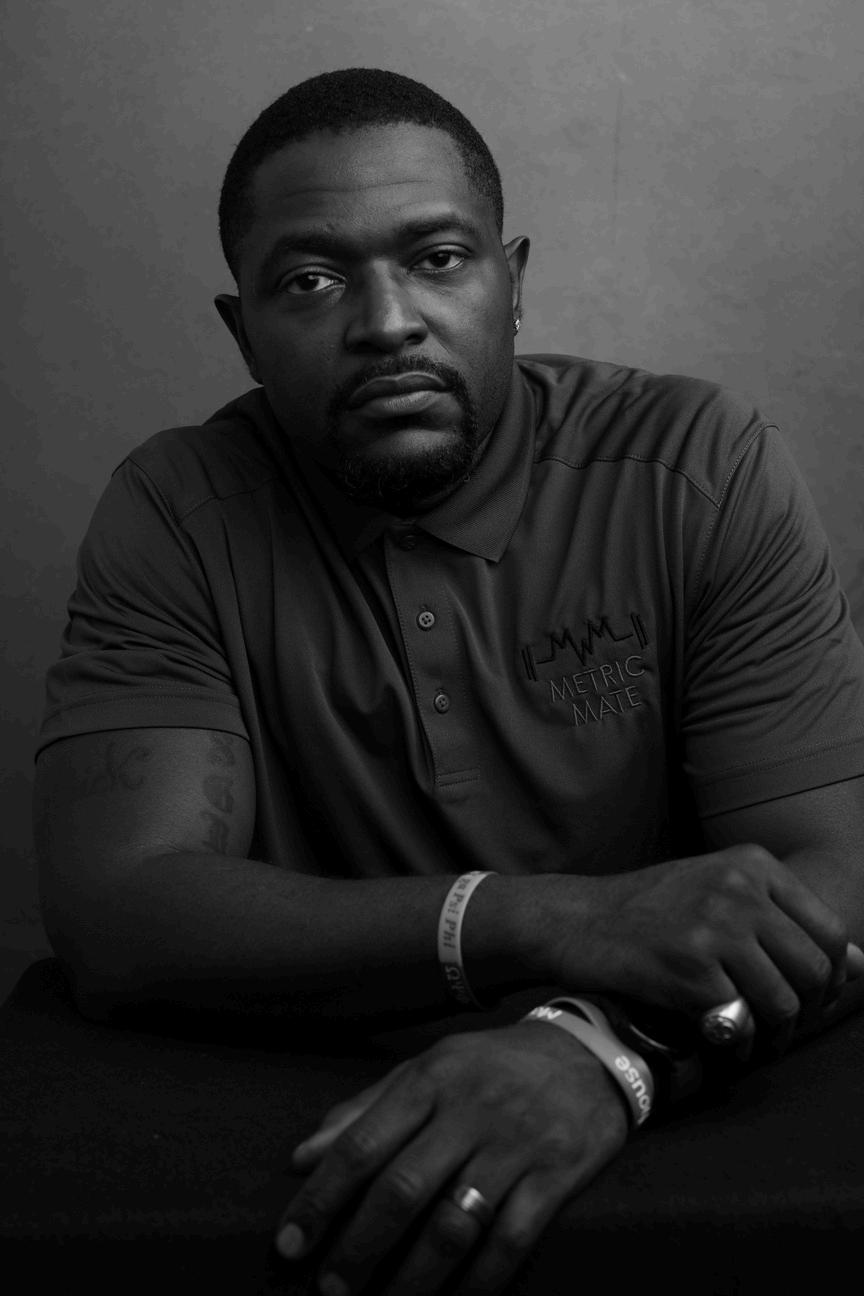
Q. Can you briefly share your journey into STEM and what led you to pursue it?
A. STEM was a part of my life before I knew it. Breaking and fixing. Figuring out and dissecting. Seeking understanding was always in me. Always on things that I found interesting like electronics, barely in school. Was not the epitome of a perfect student at all. Learning by doing is my calling. This is what led me to my first business and into Electrical Engineering. Taking real things and making them better. Seeing real problems and making them disappear. That’s what I do.
45|STEMCREWMAGAZINE

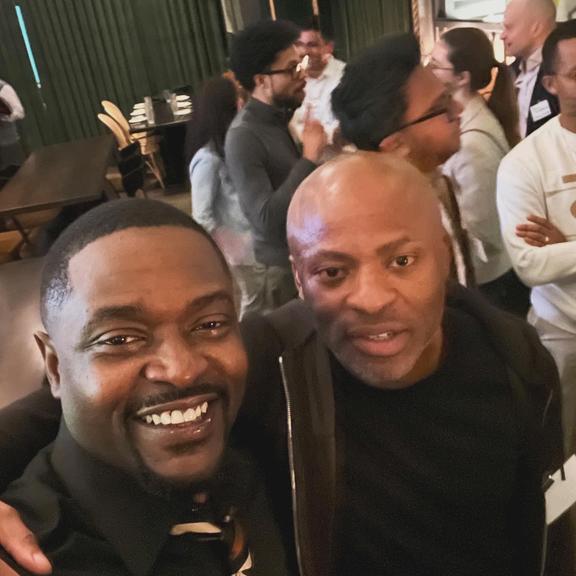
Q. Can you briefly share your journey into STEM and what led you to pursue it?
A. STEM was a part of my life before I knew it. Breaking and fixing. Figuring out and dissecting. Seeking understanding was always in me. Always on things that I found interesting like electronics, barely in school. Was not the epitome of a perfect student at all. Learning by doing is my calling. This is what led me to my first business and into Electrical Engineering. Taking real things and making them better. Seeing real problems and making them disappear. That’s what I do.

Q. Can you share a significant obstacle you faced in your STEM journey and how you overcame it?
A. Obstacles are everywhere. My vision of who I am at 60 is what drives me. Having a long term goal should not be stifling but you should inform your decisions as you move through troubles.
Q. How do you believe your work in STEM contributes to solving real-world problems or advancing society?
A. My work with the 21st Century STEM Foundation is my best work in STEM. Seeing students gain insight, get exposed, and act on this knowledge is amazing. Every 2nd Saturday here in Atlanta, I get to see these students grow in 4 hours. Their mind expanding to new reaches and applying that boundless energy to concepts that have shaped the world or discovering new pieces that will. I love it. I want more students to take advantage of it. I want it to change the world.
Q. What advice do you have for parents and educators who want to encourage children to explore and excel in STEM?
A. Make it real. Books are for imagination. The beatitude of STEM is that it is all around. Dive in.

@emm._.tee
@emm0 0Tee
https://www.linkedin.com/in/mtstrickland
https://youtube.com/channel/UCz328vi4wpNF59DlRj2I7Iw
TheMetricMate.com
46|STEMCREWMAGAZINE
Dr. Amy Sokoll Bauer
With previous experience as a K-12 math and science teacher implementing technology in addition to instructing future elementary teachers in a teaching program, Dr Amy seeks to democratize STEM education and learning with technology by providing a virtual space of resources and activity ideas for parents and teachers alike Dr Amy is a techie- someone who is passionate about technology A podcast for parenting navigating a world of technology, website, and social media accounts brimming with resources to give educators and parents confidence to instruct STEM education with an extra sprinkle of technology In addition to virtual resources, Dr Amy also drew on her love of reading children’s books with her kids and wrote a children’s book, Don’t Lose Your Marbles
The book features a young female protagonist who tackles a problem she’s facing using the STEM Engineering Design Process The book also features a Dear Reader section sharing the steps of the STEM Engineering Design Process and key vocabulary throughout the story Don’t Lose Your Marbles will be published in May 2024 on Amazon
Q. Can you briefly share your journey into STEM and what led you to pursue it?
A. I grew up feeling convinced she was “bad at math” until high school when a pre-calculus teacher showed me how fun math could be. After falling in love with the puzzle of math learning, I pursued an undergraduate degree in secondary math and science education and worked as a K-12 classroom teacher for multiple years. It was while I was teaching math and science that I was involved with grants integrated technology in learning and where I saw the power of using technology and robotics as learning tools. Seeing learning come alive and kids passionate for innovating and creating eventually led to her pursuing a PhD in teacher education, centering learning and classes around technology and mathematics education.

Q. What advice do you have for parents and educators who want to encourage children to explore and excel in STEM?
A. Get curious! My advice for parents and educators is to nurture curiosity in kids from an early age. You can inspire curiosity by:Encourage them to ask questions, explore new ideas, and experiment with hands-on activities. -Create an environment where curiosity is celebrated and where mistakes are seen as opportunities for growth and learning. -Provide access to various STEM resources, from books and videos to interactive experiments and educational games. -Show kids the real-world applications of STEM concepts and inspire them with stories of scientists, engineers, and inventors who have made a difference
47|STEMCREWMAGAZINE
The journey of exploration and discovery in STEM is about nurturing a lifelong love of learning. By cultivating curiosity and providing tools and support, parents and educators can empower kids to explore and excel in STEM. This can unlock their potential in problem-solving and innovation, preparing them to succeed in an ever-evolving and complex world.
Q. Can you share a significant obstacle you faced in your STEM journey and how you overcame it?
A. I was a first-generation, non-traditional college student pursuing degrees. I often found myself experiencing imposter syndrome when attending college and post-secondary school later in life, especially as a millennial who grew up with dialup internet focused on technology in education. My breakthrough came during a study on student identity in STEM learning. It dawned on me that I lacked a positive identity as a STEM educator, contributing to feelings of not belonging If student identity in learning STEM was critical to their success, my STEM educator identity in instructing activities was equally as important Overcoming this obstacle involved finding a supportive community of like-minded individuals and believing I belonged as a STEM educator This transformation enabled me to excel and ultimately led me to create accessible resources aimed at boosting confidence among parents and educators in teaching STEM
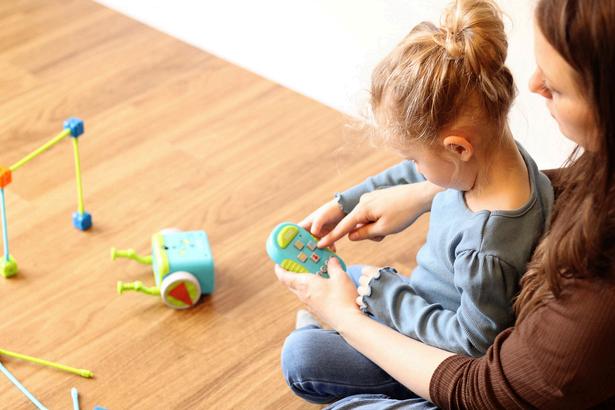

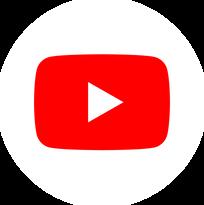

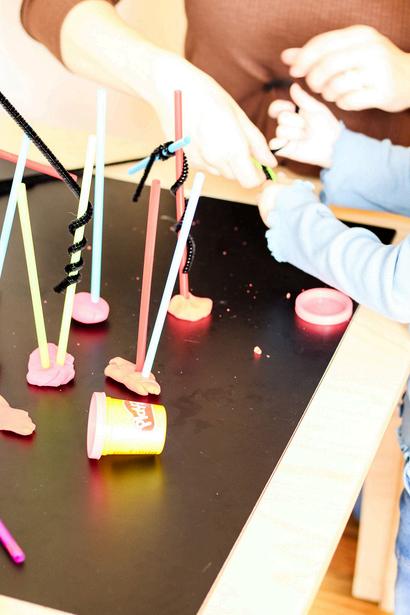
Q. How do you believe your work in STEM contributes to solving real-world problems or advancing society?
A. My work in STEM education is fueled by a passion for democratizing learning opportunities and empowering young minds to explore, create, and innovate I believe that STEM education, including technology integration and problem-solving activities, should be accessible to all I am committed to providing low to no-prep STEM ideas that guide educators and parents in facilitating engaging activities promoting critical thinking and problem-solving To me, STEM learning extends far beyond traditional subjects and classrooms it's about fostering curiosity and exploration in everyday life And as a 'techie' someone passionate about technology I emphasize teaching kids to use technology as a tool for problem-solving I like to say that I teach the STEM Engineering Design Process with an extra sprinkle of technology, driven by my deep passion for robotics and coding In our rapidly evolving world, harnessing technology for realworld problem-solving is crucial By combining the power of home and school learning to empower kids to embrace STEM and technology early on, we prepare them to be future innovators and leaders
@thestemtechie @thestemtechie @thestemtechie
48|STEMCREWMAGAZINE
Sha'Rell Webb
Sha’Rell was the first African American to be named an Education Specialist for NASA’s Lunar and Planetary Institute in its history! In this role, she collaborated with various scientists who conducted Planetary Science Research and Space Sciences. Firing her boss to follow her dreams of entrepreneurship and with a strong personal conviction that youth can do “Amazing Things” with the proper encouragement and guidance, Mrs. Webb founded Coding with a Twist, LLC. Coding With a Twist is an organization committed to introducing the underestimated to the world of computer science, coding, robotics, and all things STEM.
As a former science teacher and all-around educator,
Sha’Rell has an uncanny knack for inspiring and motivating all children to learn, including children with disabilities. She uses this skill set to develop customized curricula for children on the autism spectrum. Her curriculum includes sensory-friendly STEM-based experiences that foster a love for science and enhance their communication skills. She believes that early exposure to such experiences is vital to establishing a trajectory of positive educational experiences and success post-high school. Her curriculum has been implemented in numerous STEM camps throughout the city and adopted to be appropriate for children on the spectrum as young as 3-4 years old.


Sha’Rell’s energy is infectious, and her passion for early intervention through STEM is undeniable.
Sha’Rell’s Personal Motto is “On Fire to Inspire!”

www.codingwithatwist.org
https://www.linkedin.com/in/sharellwebb

@sw _onfiretoinspire
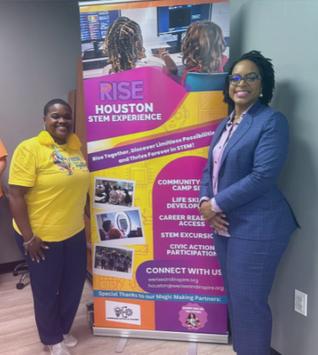

49|STEMCREWMAGAZINE



ThisCouldBeYou FEATURED.STEMCREWMAGAZINE.COM WE’RE LOOKING FOR STEM ADVOCATES/ EDUCATORS TO BE FEATURED STEMCREWMAGAZINE.COM IGNITINGCURIOSITY ANDEMPOWERING FUTURES
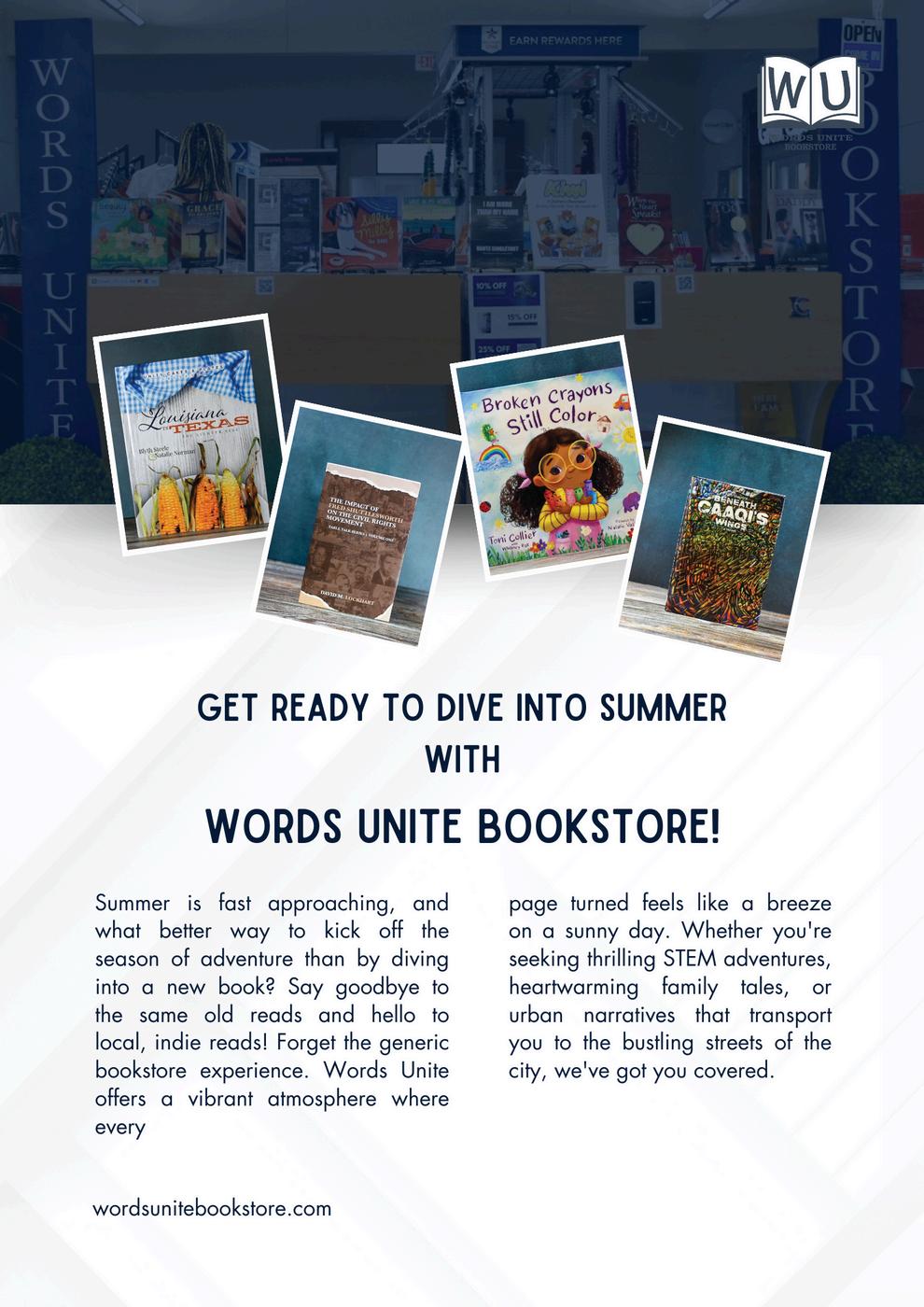





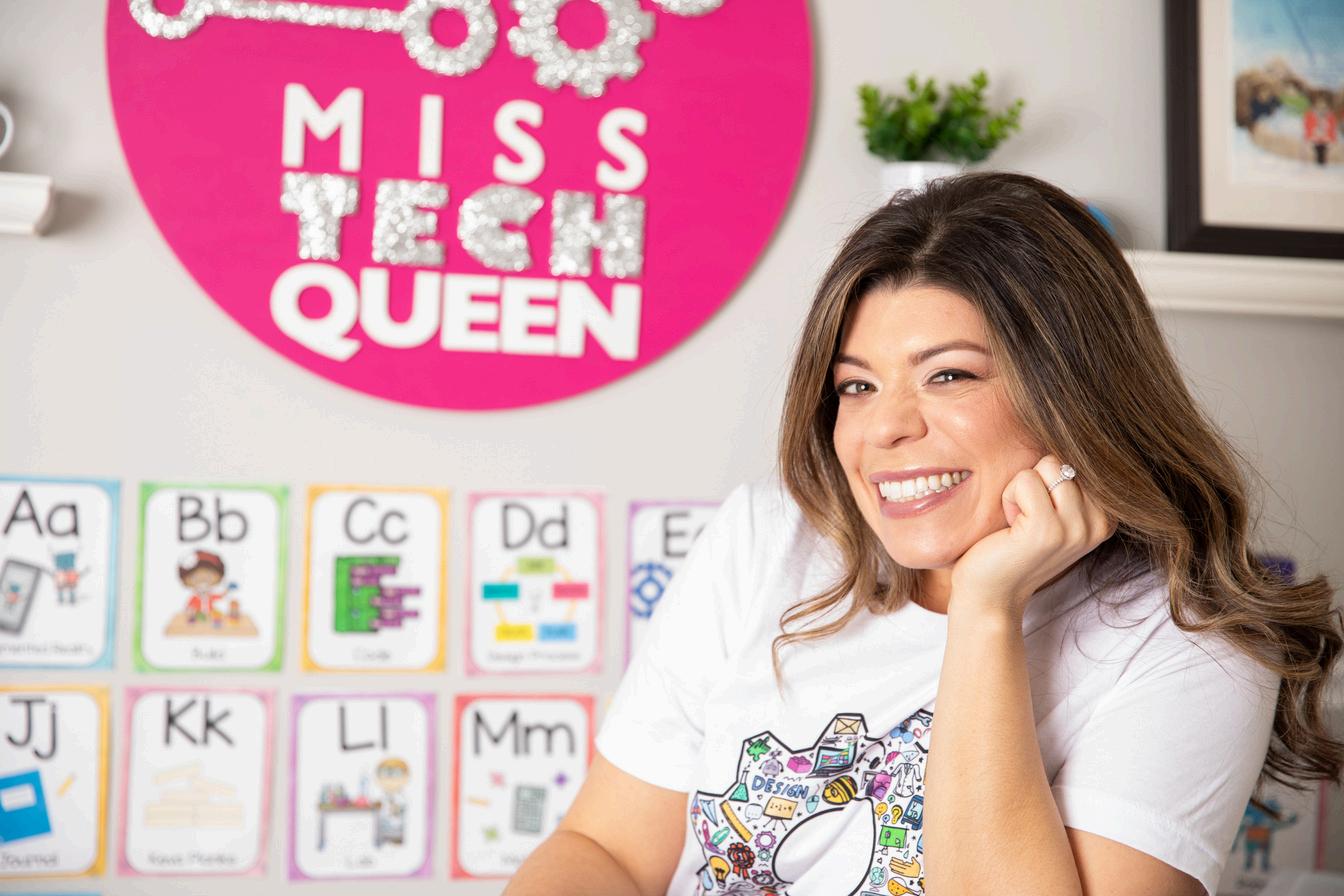
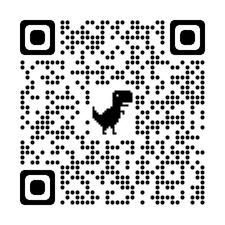
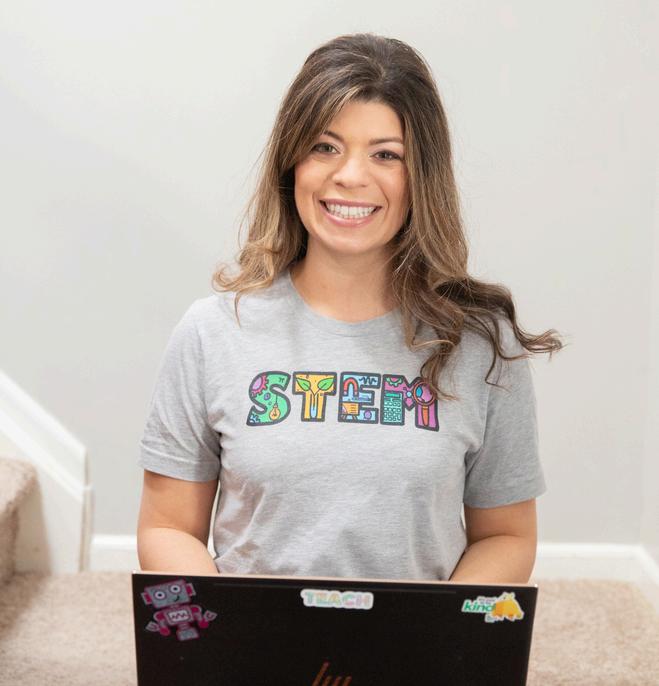
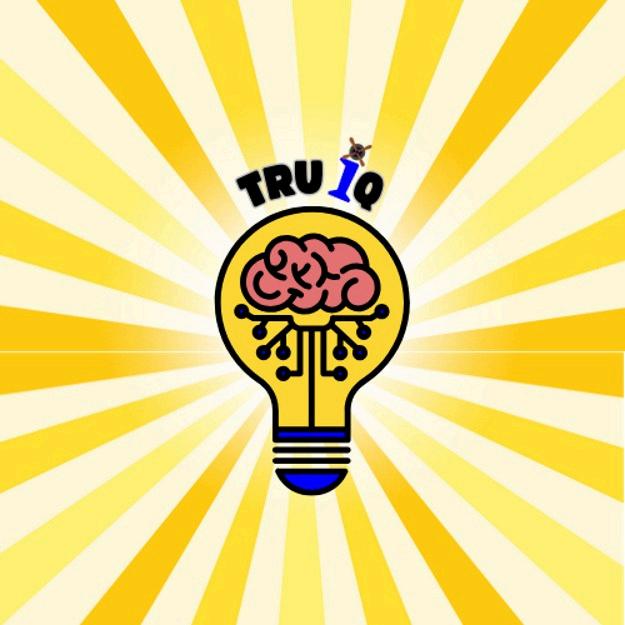
BUILD AND STRENGTHEN SKILLS WITH TRU IQ
01 02 03 04 05
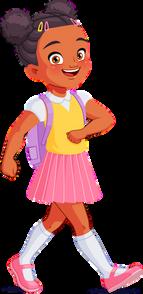
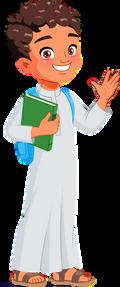
Analytical Skill Development
TRU iQ's ARIS Tool* sharpens adaptability and competency, enhancing crucial analytical and problem-solving skills essential for success in STEM fields.
Strengthening literacy skills lays the groundwork for understanding complex STEM concepts, empowering children for future educational pursuits.
Early Exposure
With STEM-related content integrated into engagement plans, TRU iQ introduces children to the interconnected worlds of science, technology, engineering, and mathematics from an early age
Critical Thinking
The iReadE report not only captures critical thinking abilities for literacy but also cultivates the mindset needed for success in STEM disciplines
Reading as a Foundation Personalized Learning for STEM
With a TRU iQ evaluation, personalized learning plans that not only enrich literacy but also ignite a child's interest in pursuing rewarding STEM-related careers is bolstered, encouraging a lifelong love of learning and setting them on a path for academic success
Learn more about how TRU iQ
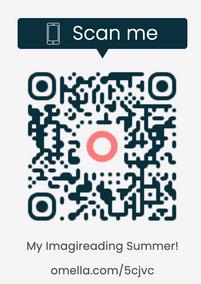


support
Imagireader here. #letraisereaders Sunshine Sam LaLa D
can
your
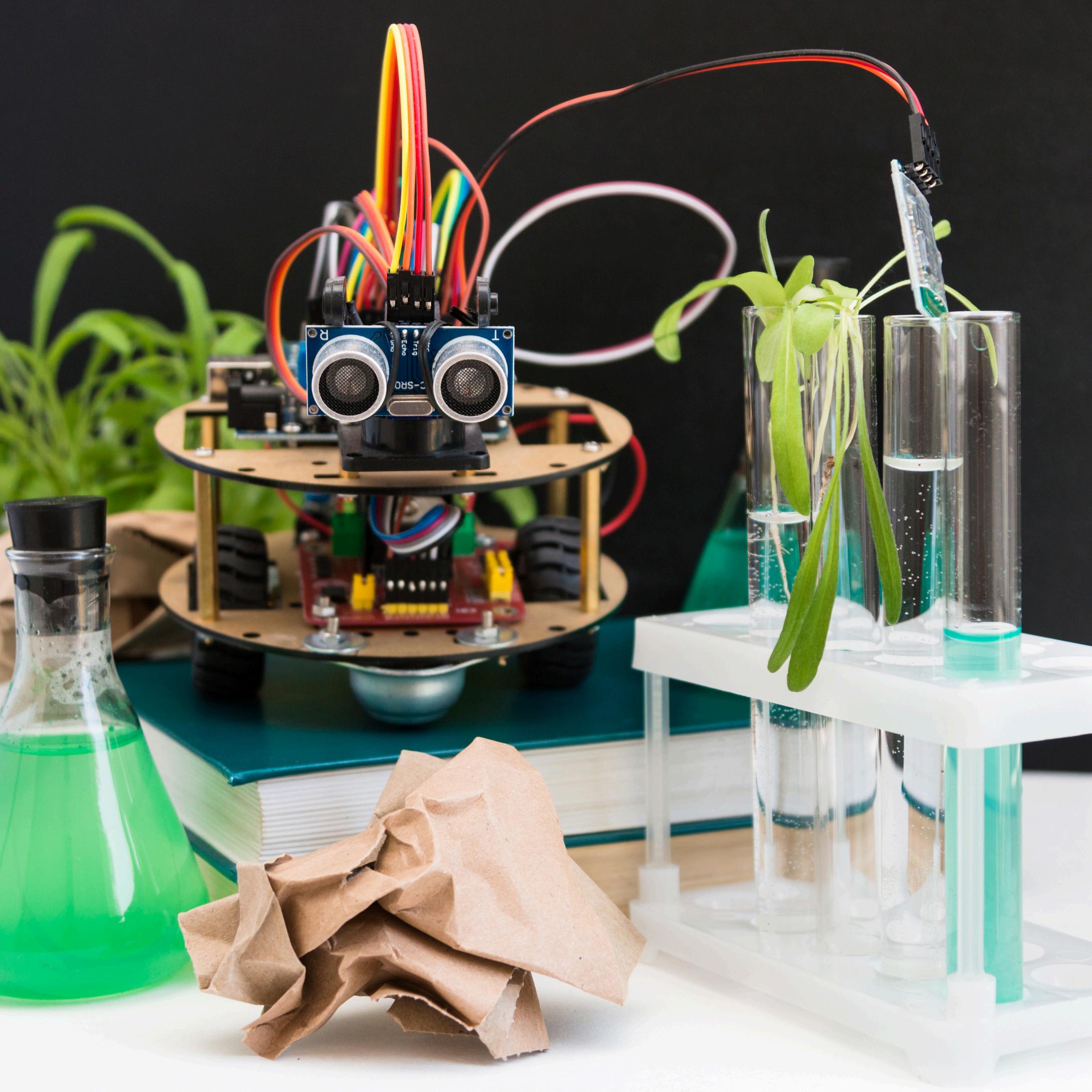
4 FUN AND ENGAGING STEM ACTIVITIES FOR KIDS
4 Fun and Engaging STEM Activities for Kids
by Julianna Sheeran
I love to incorporate books into my STEM classroom. We often use them as a jumping off point for our learning. Here are four STEM activities that are tied to different children’s books You can read the story to your children or watch a recording on YouTube, and then ask questions about it
Science
The book “Alaska’s Three Bears” by Shelley Gill discusses the three bears that are native to Alaska polar, black, and grizzly bears This activity allows you to learn about one adaptation that polar bears have that helps them survive and swim in cold water BLUBBER We are going to be creating a blubber glove and use it to see the difference it makes when submerged in ice water.
Materials:
Crisco or other vegetable shortening
Two Ziplock bags
Duck tape
Tub with ice water
Two Thermometers (optional)


Instructions:
1.
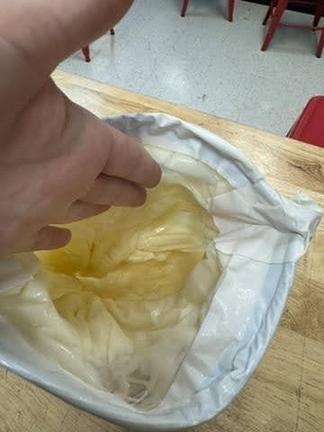
Fill one Ziploc with Crisco, spreading it out to create a layer.
2.
Put the other Ziploc bag in the bag with Crisco, so students can stick their hands into the Crisco without touching the fat.
3.
Duct tape the edge so that the Crisco does not go out
4
Fill the tub with ice water and put the blubber glove in the ice water without getting water inside
5
Have kids put their hands in the ice water for about 15 seconds
6
Dry their hands off and talk about how it felt
7.
Then have them put their hands in the blubber glove for 15 seconds and talk about the difference between the two.
8.
Optional: Place one thermometer in the water and one in the blubber glove and look at the temperature difference between the two
59|STEMCREWMAGAZINE
Technology
One of my favorite ways to introduce coding to students is through unplugged coding activities. This allows students to focus on the steps and the coding rather than getting sidetracked by the robots or devices. I created this coding unplugged to go along with the book “It’s a Firefly Night” by Dianne Ochiltree, but it could go along with any book about fireflies or even without a book.
Materials:
Unplugged coding mat
You can create your own coding mat by creating a table on a word document or powerpoint and making it fill the whole page You can also laminate your mat so that it can be reused.
Coding pieces
You can print your own coding pieces from clipart
Game piece/eraser/picture on a binder clip (kids will use this to show how their code moves on the page).
Recording sheet (this could just be a simple sheet of paper)
Instructions:
This activity works best in pairs 1 Have kids set the start and stop point on the mat, they should be on opposite sides of the board Place their game piece at the start 2
Then have the kids set the obstacle pieces on the board 3
Kids will then write the code for the firefly to follow to make it to the end. They will write the code using arrows. 4



6.
5. Repeat the process with new spots and new codes.
Then take the game piece through the code on the mat to make sure that it works and doesn’t hit obstacles.

60|STEMCREWMAGAZINE
Engineering
The next activity is tied to engineering with the book “The Boy Who Harnessed the Wind” by William Kamkwamba. This book is a wonderful example of how even kids can use engineering to help those around them. This book tells the story of how William Kamkwamba created a windmill to help his village. This activity can be made more complex by using a motor and voltmeter to see how much energy is produced by the windmill, but I will keep it to the basics here.
Materials:
Cardboard
Scissors
Cork
4 Paper Clips
Wooden skewer
Straw
Large popsicle stick
Tape Fan

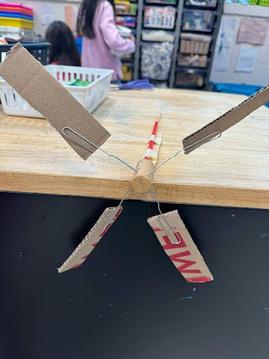
Instructions:
1.
Have students cut windmill blades out of cardboard. They can create their own shapes or designs to see which works best.
2
Open the paper clips so that they have one long side and stick the long side into the cork
3
Slide the cardboard into the side of the paper clip that is still curled
Put a wooden skewer in the middle of the back of the cork 4
5 Hold the popsicle stick in front of the fan to see how well the windmill blades work.
7.
Tape the straw onto the popsicle stick, then put the skewer into the straw This will allow the skewer to rotate to see how the windmill blades work.
6. What would happen if you change the angle the blades went into the cork? What if you changed the design of the blades? What would happen if you change the size of the blades?
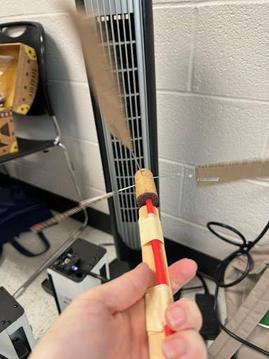

61|STEMCREWMAGAZINE
Math
This activity ties to one of my favorite math authors, Cindy Neuschwander. She has written really fun and engaging math adventure stories that teach math concepts in fun and interesting ways. The book on which this activity is based is “Patterns in Peru” . In this book, a brother and sister use patterns to help them discover a lost city in Peru
Materials: Construction paper
Instructions:

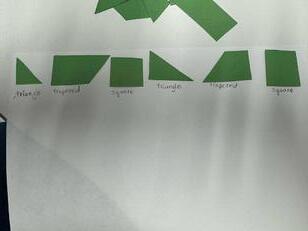
1. Then have kids create their own patterns using the shapes. You can have them create as complex a pattern as they desire.
Have kids cut the construction paper into different shapes For younger kids you can do basic shapes: circles, triangles, rectangles, etc For older kids you can give them more of a challenge and have them do different quadrilaterals or polygons and have them name the shapes and their properties.
2. Have them share their patterns with a friend and the friend can predict the next shape
4
3. You can have them mix up the shapes and form another pattern
5
Once they’ve finished creating their patterns you can have them glue their shapes onto another piece of paper and label them. With older kids have them label their shapes and their properties.
About the Author

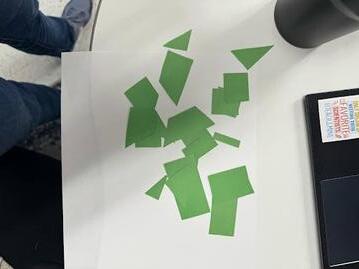
Julianna Sheeran is a third-generation teacher just finishing my eighth year in education She has taught kindergarten, third grade, and fifth grade and finishing her first year as a STEM teacher (her dream job) in Terrell, TX She graduated from Tarleton State University with a Bachelor of Science in Interdisciplinary Studies with an emphasis in 4th- 8th grade Math and Science and a Master's degree in Curriculum and Instruction with an emphasis in STEM Julianna developed her love of math and science in her mom ' s high school science lab I love learning, and she always tries to broaden her knowledge through books, podcasts, and TV shows She loves teaching and building relationships with her students through hands-on labs, problem-based learning, and lots of fun She always tries to tie STEM to real life situations and books. Julianna's hobbies include crocheting, walking, singing, reading, photography, taking care of her plants, and traveling


https://www.teacherspayteachers.com/Store/Stem-With-Julianna
@stem.with.julianna
62|STEMCREWMAGAZINE
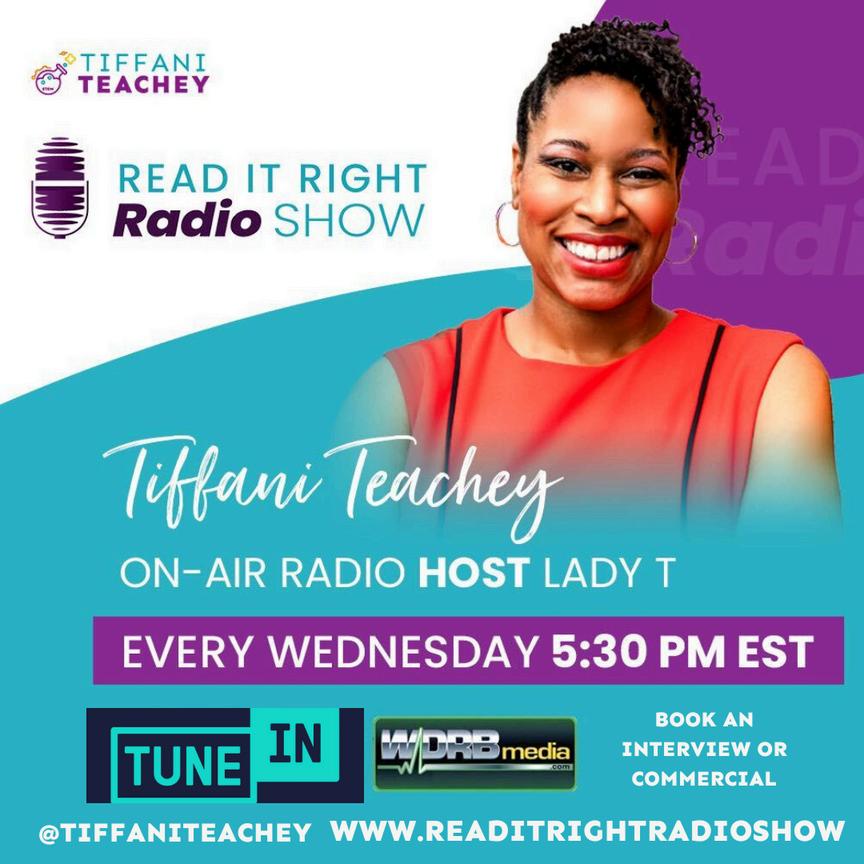
BeSuretoReachouttousforSponsorship Opportunites PromotionalMarketing SponsorshipPackagesInclude: PACKAGEC-SMARTSTARTBUNDLE 4Endorsements 1FifteenMinuteInterview 4ThirtySecondCommercials PACKAGEB-RADIOADVERTISING
PACKAGEA-COMMERICALADVERTISING
5Endorsements 5ThirtySecondCommercials
5ThirtySecondCommercials


WANTTO PUBLISHA CHILDREN’SBOOK? CONTACT US: WWW.PUBLISHTHERIGHTBOOK.COM

STEM CREW Wantanad inour magazine? advertising.stemcrewmagazine.com


STEM MATHEMATICS SCIENCE T E C H N O L O G Y E N G I N E E R I N G Unveiling the Brilliance of STEM Minds: Inspire, Create, Transform IgniteCuriosity.SparkInnovation.ShapeTomorrow www.stemcrewmagazine.com














 KarenRomanoYoung Creator/Director
KarenRomanoYoung Creator/Director




















































































































































